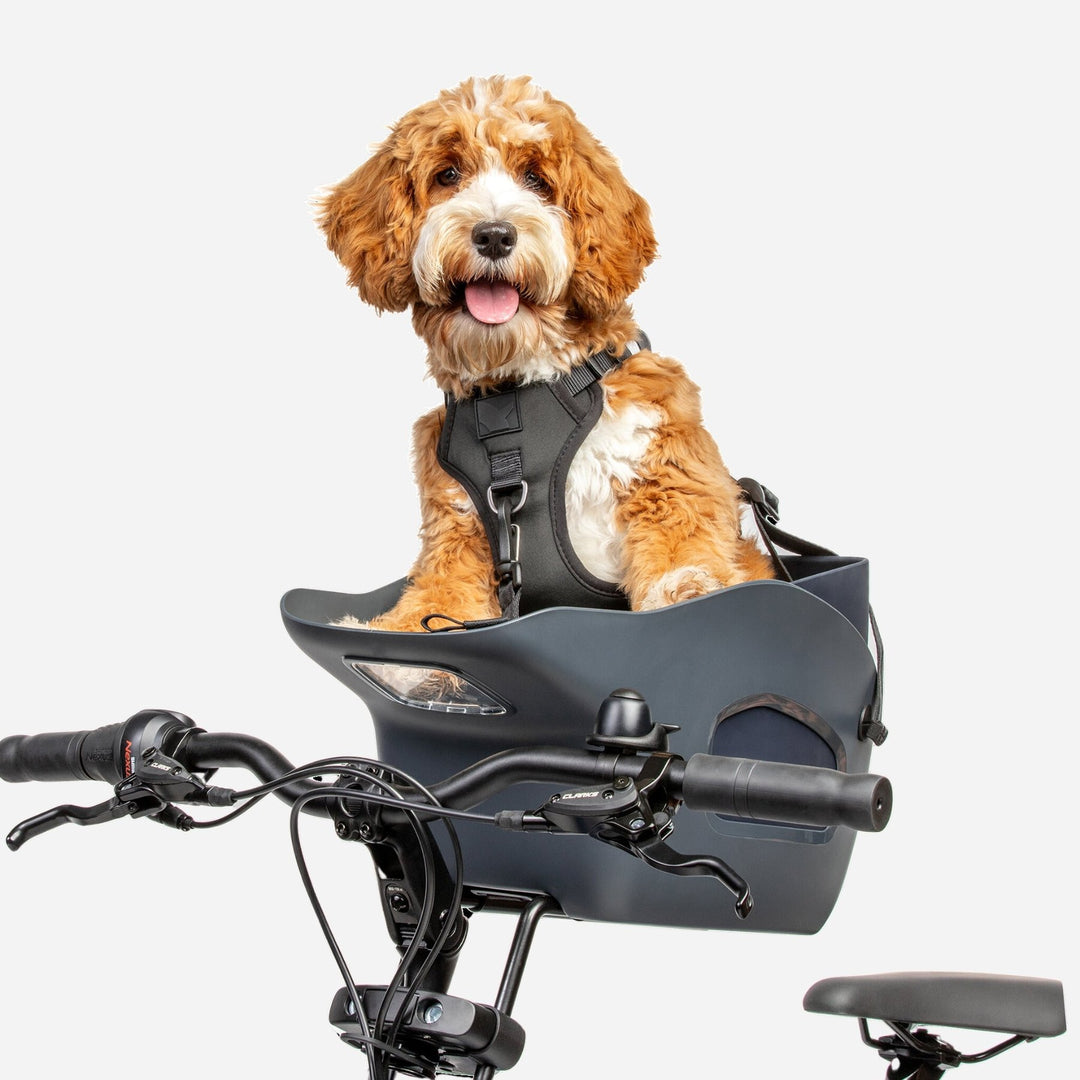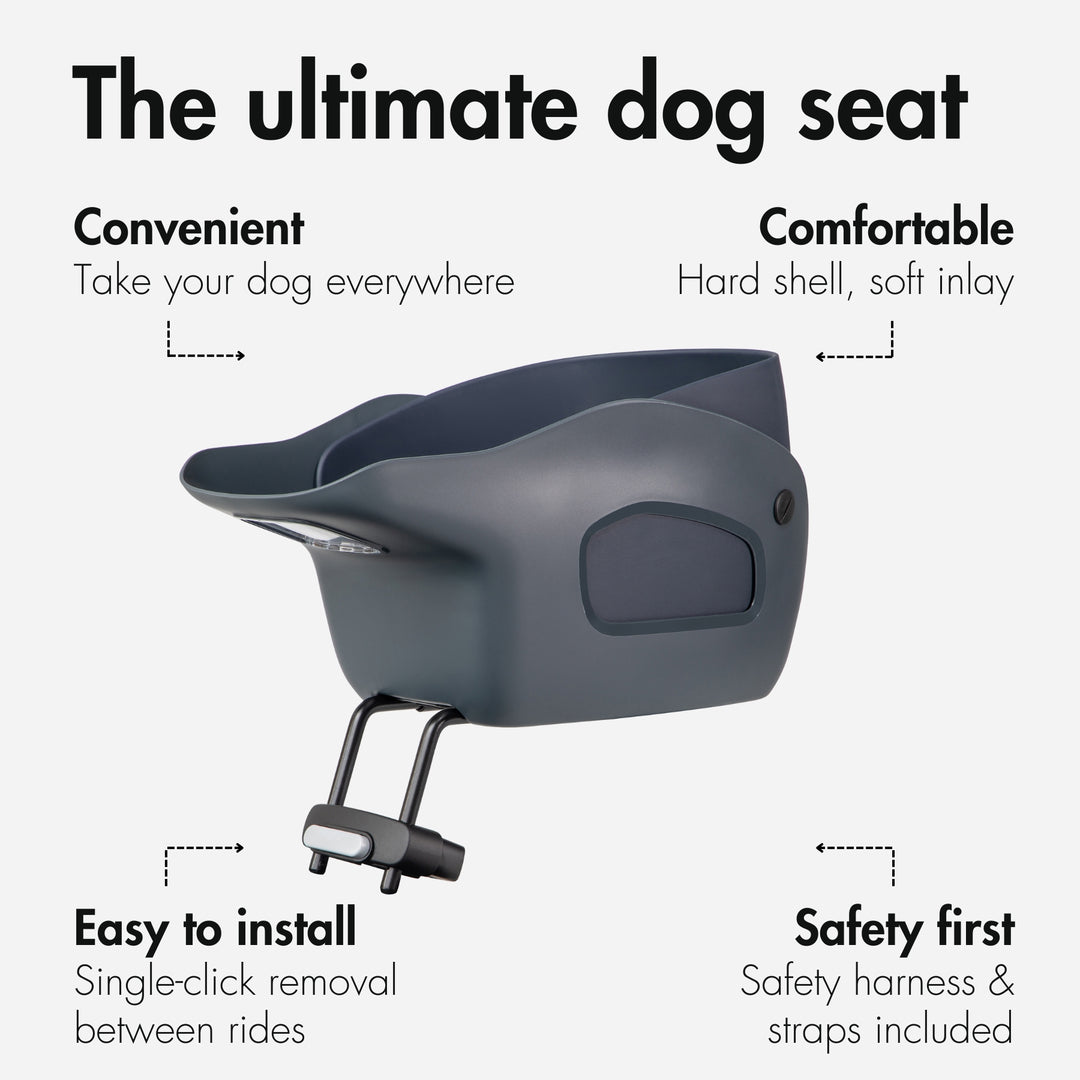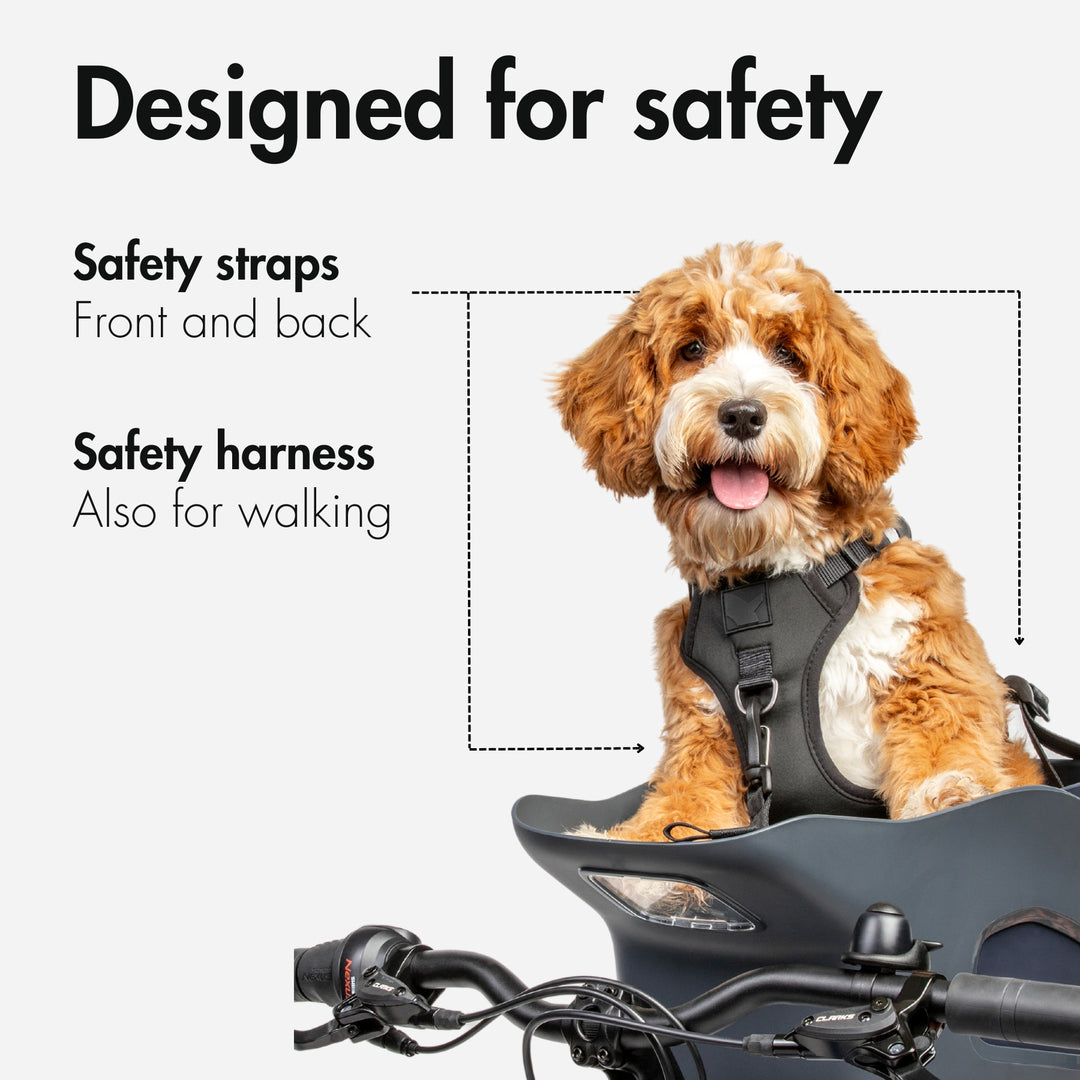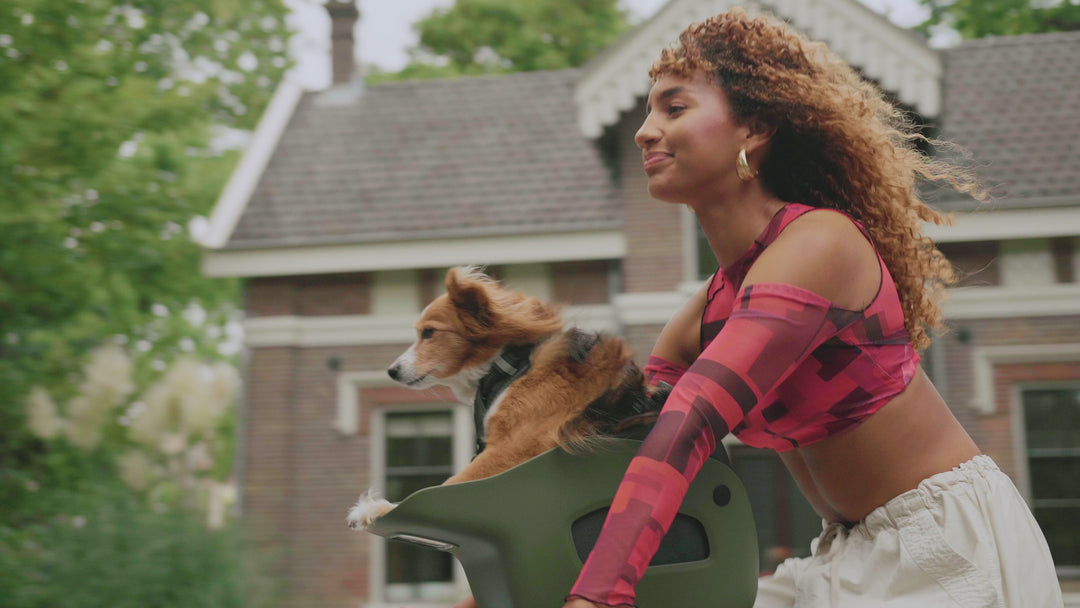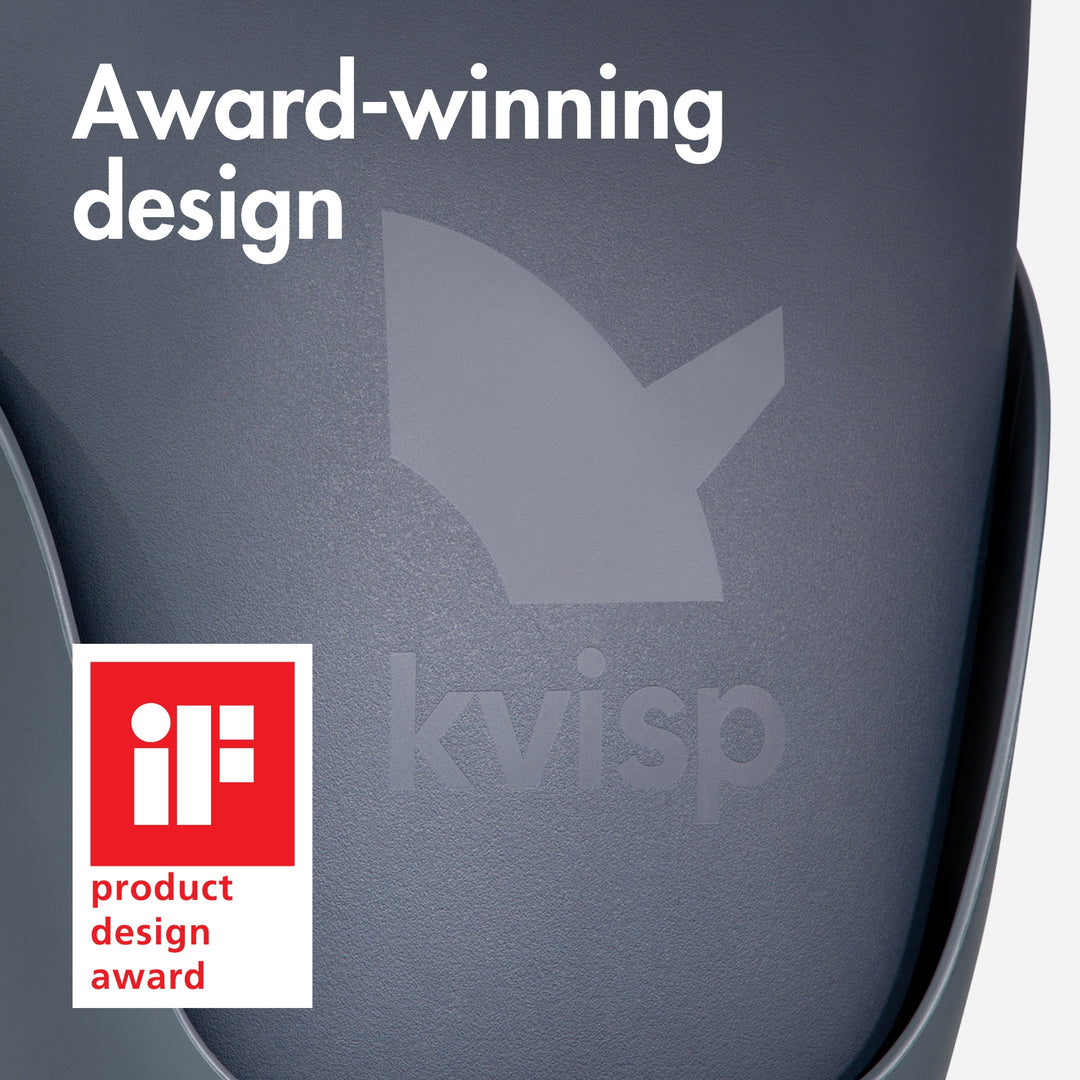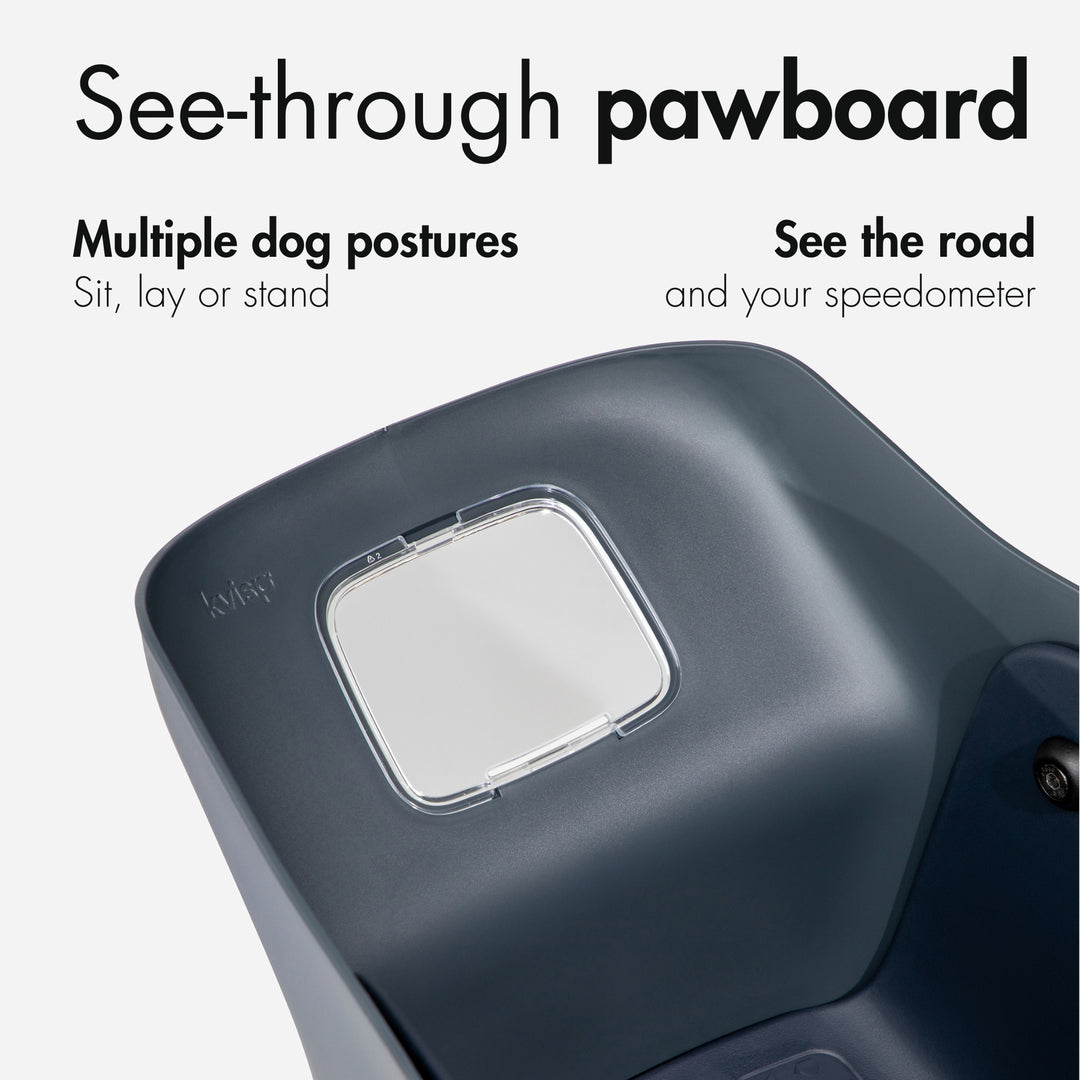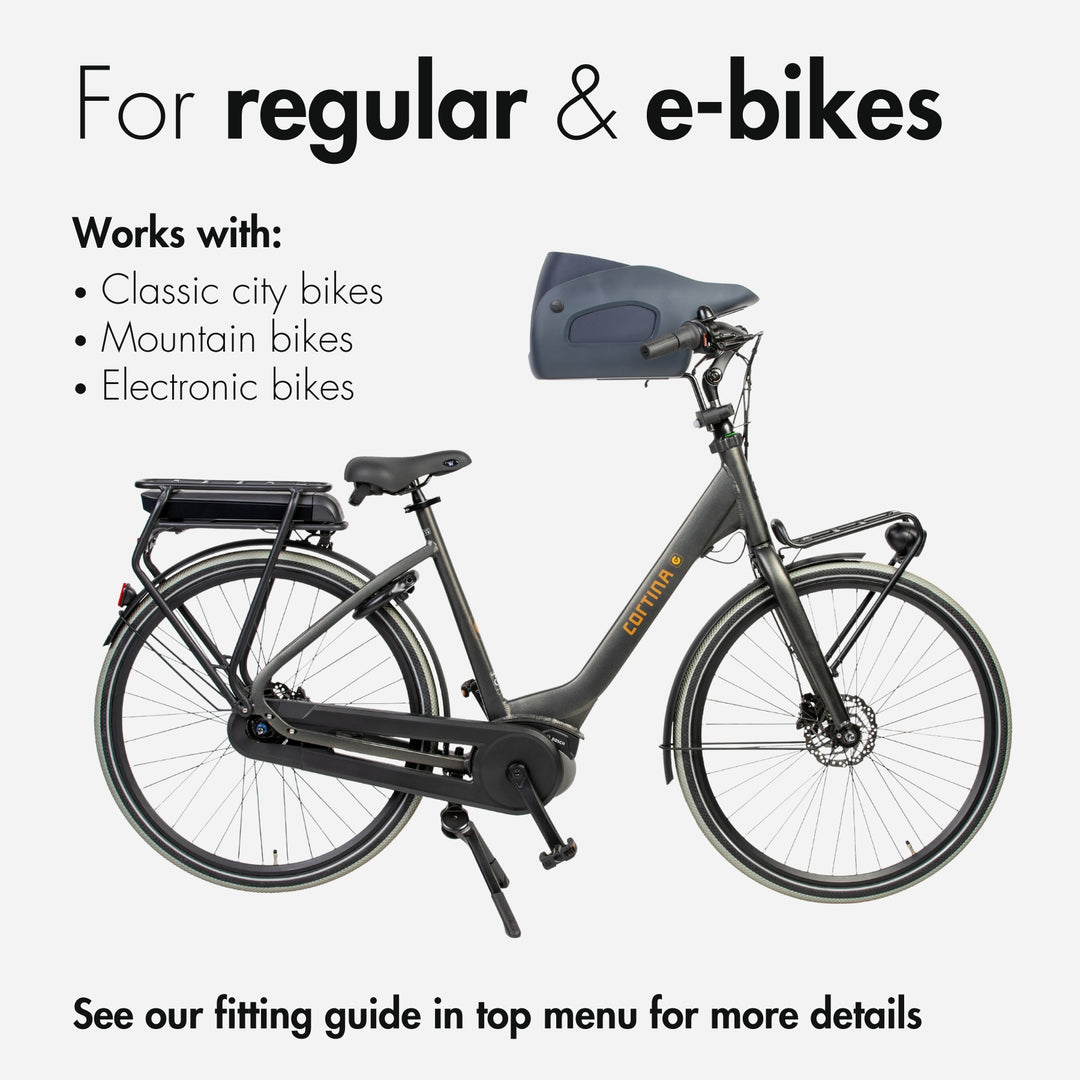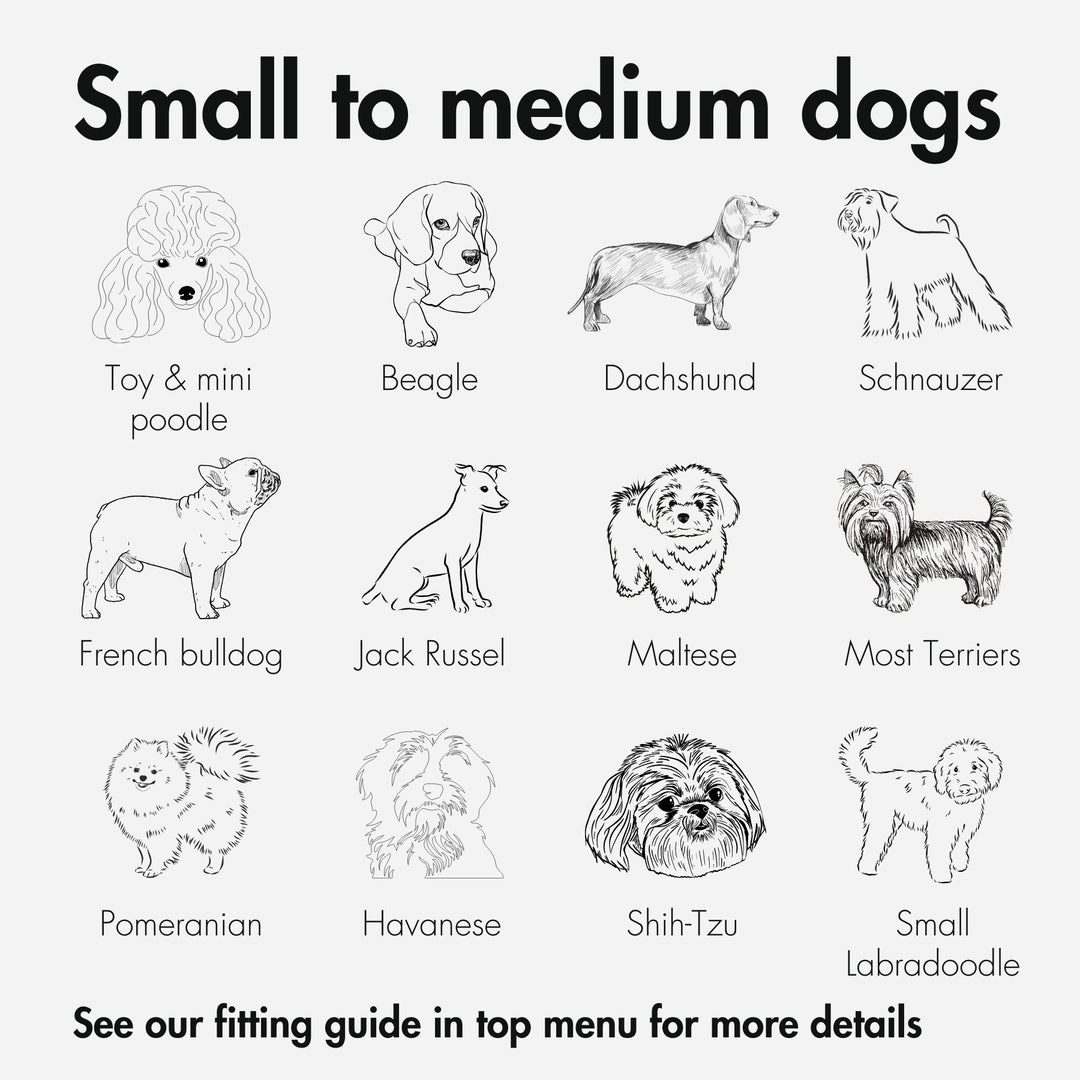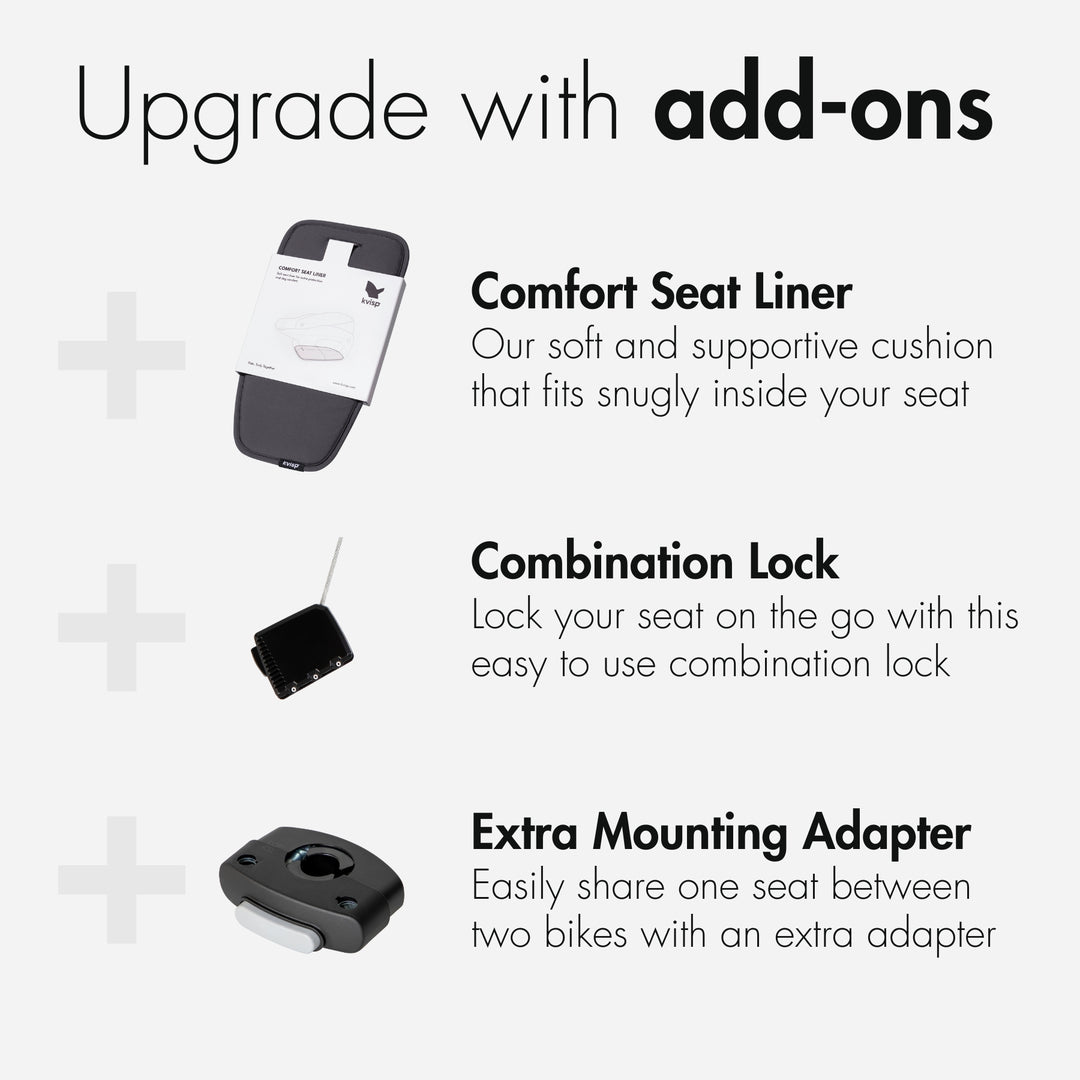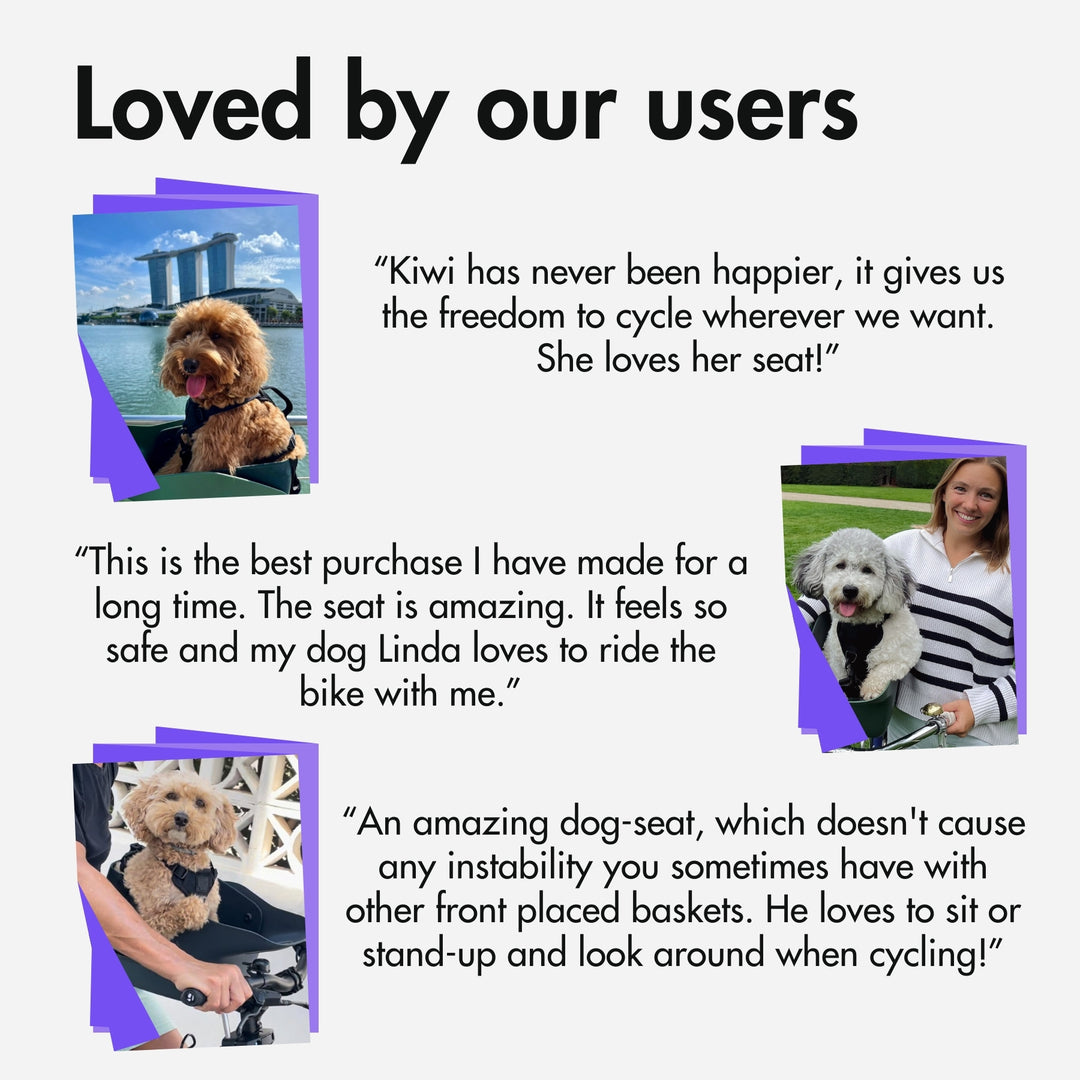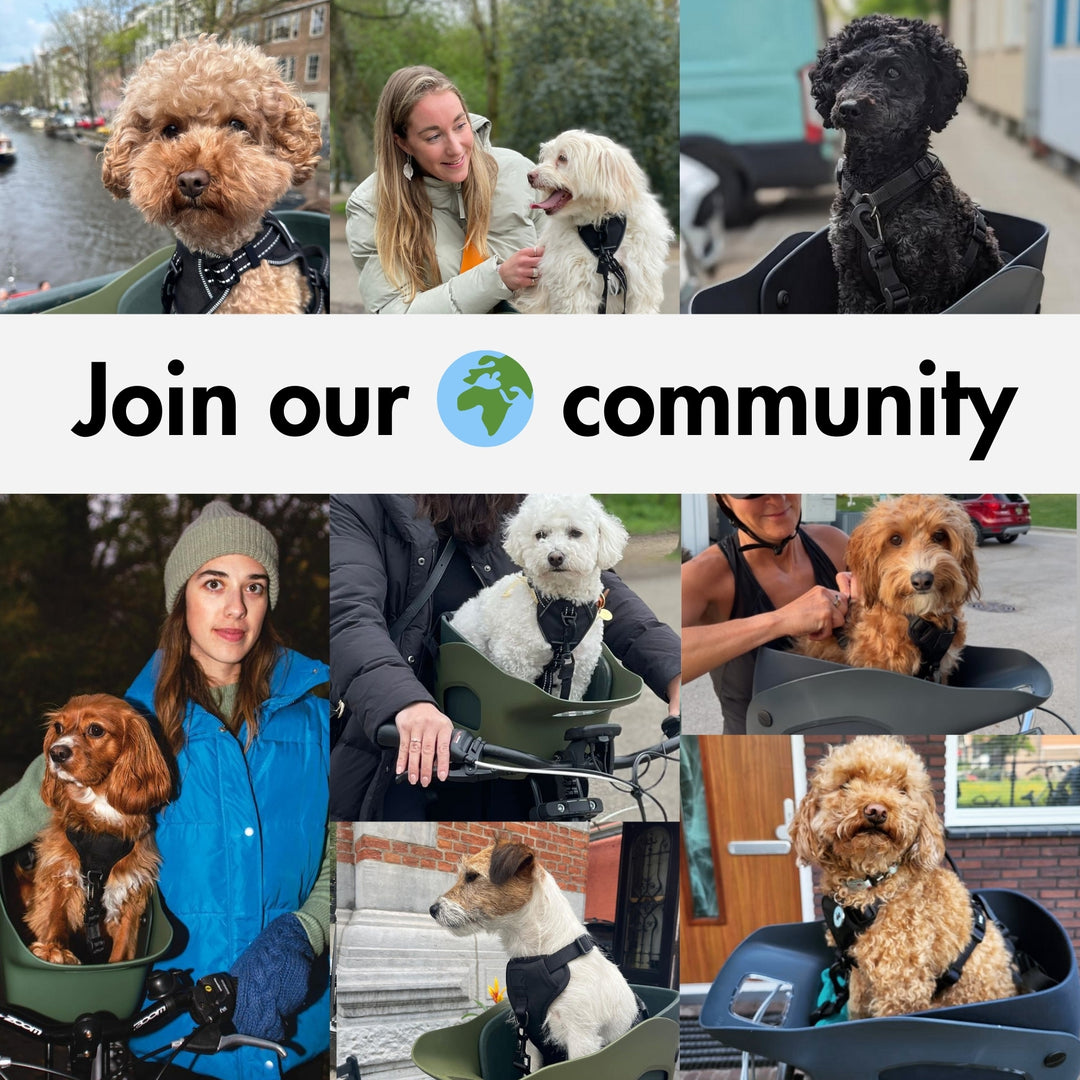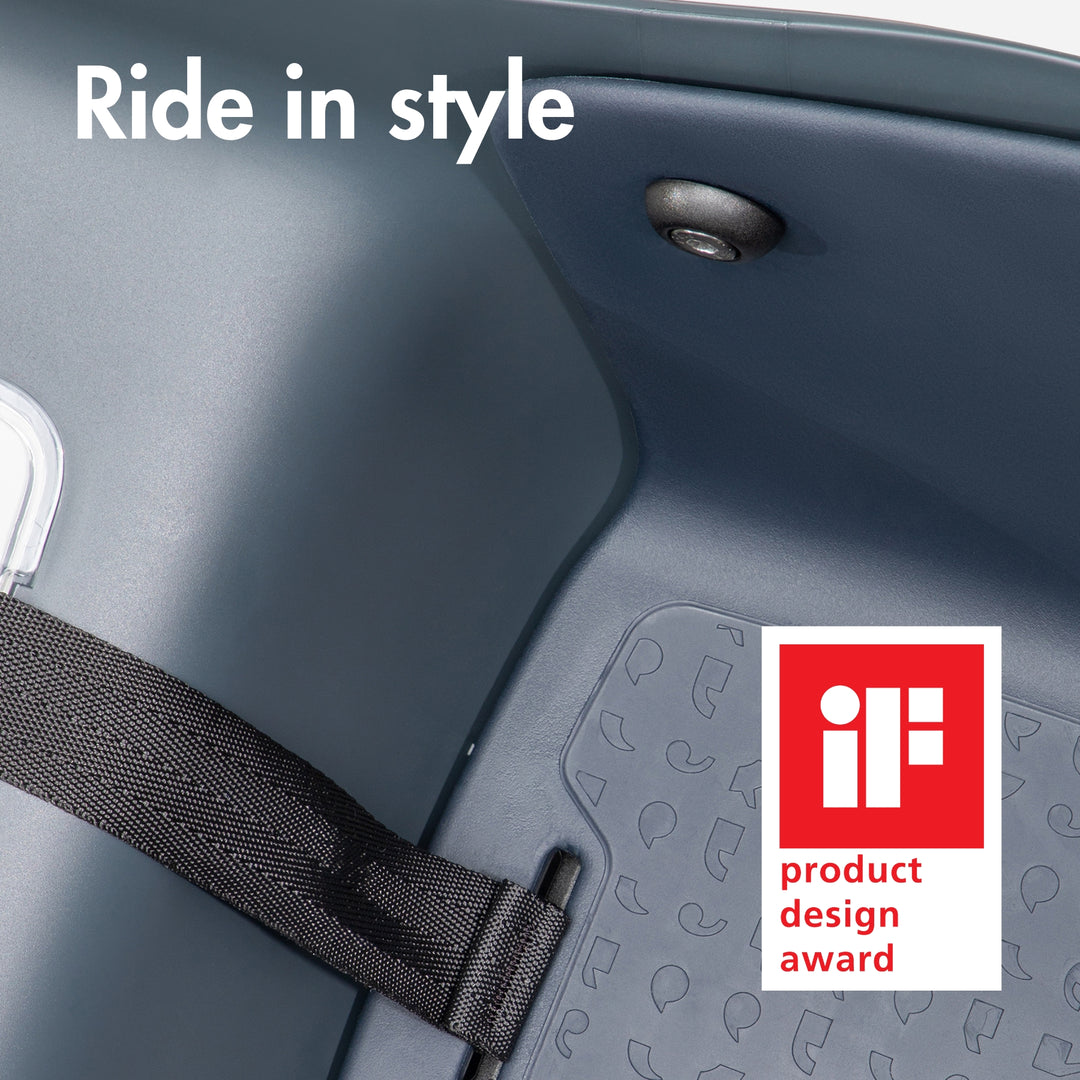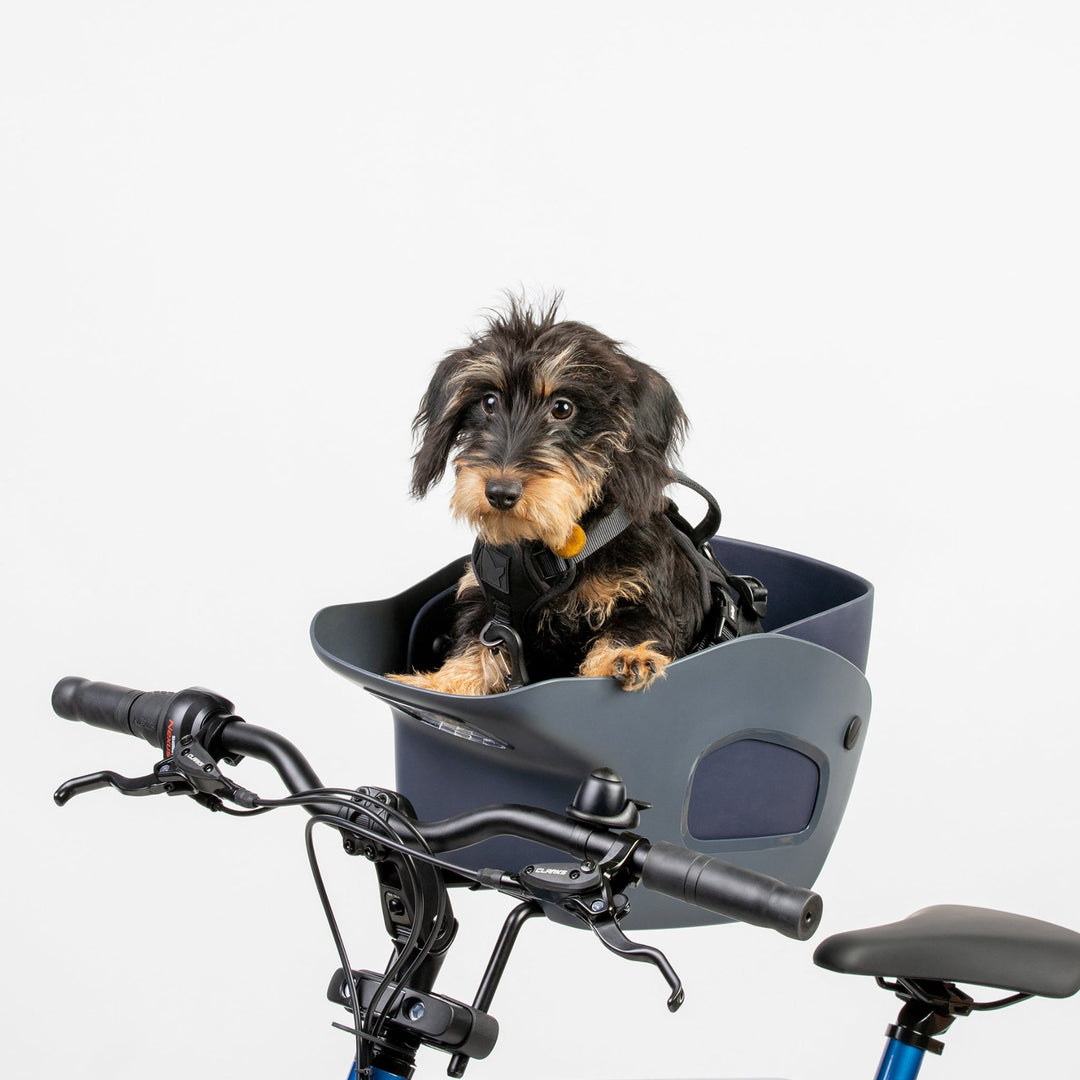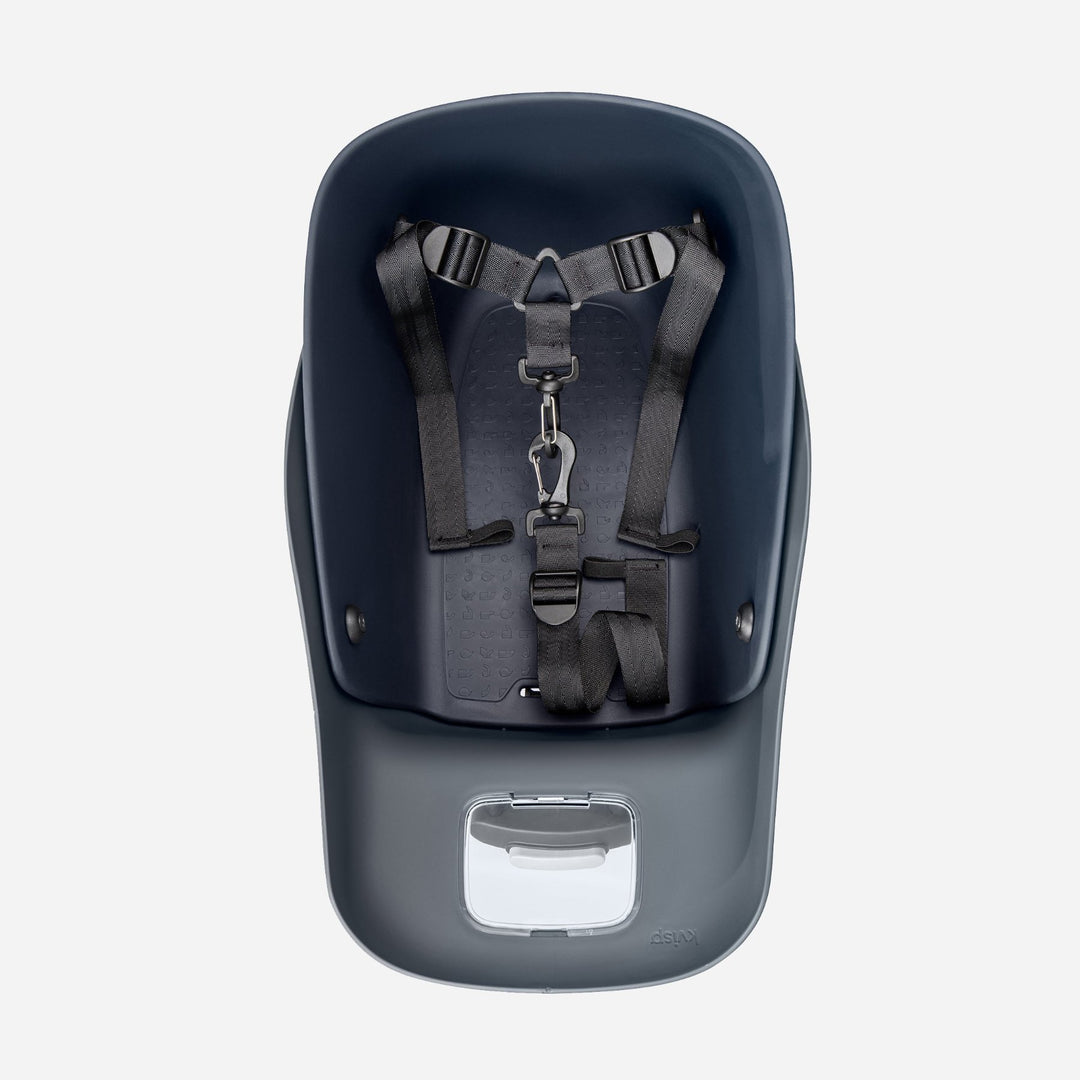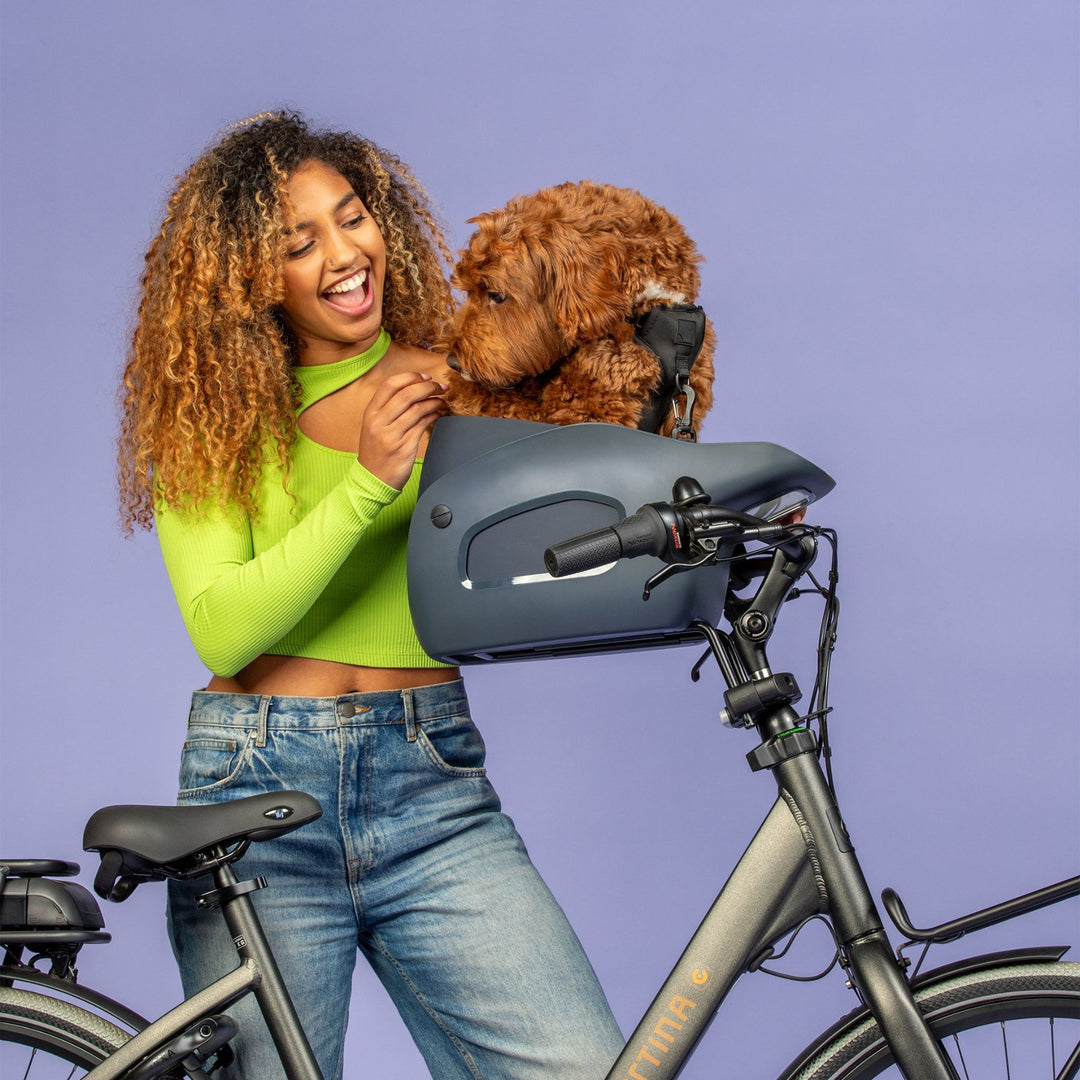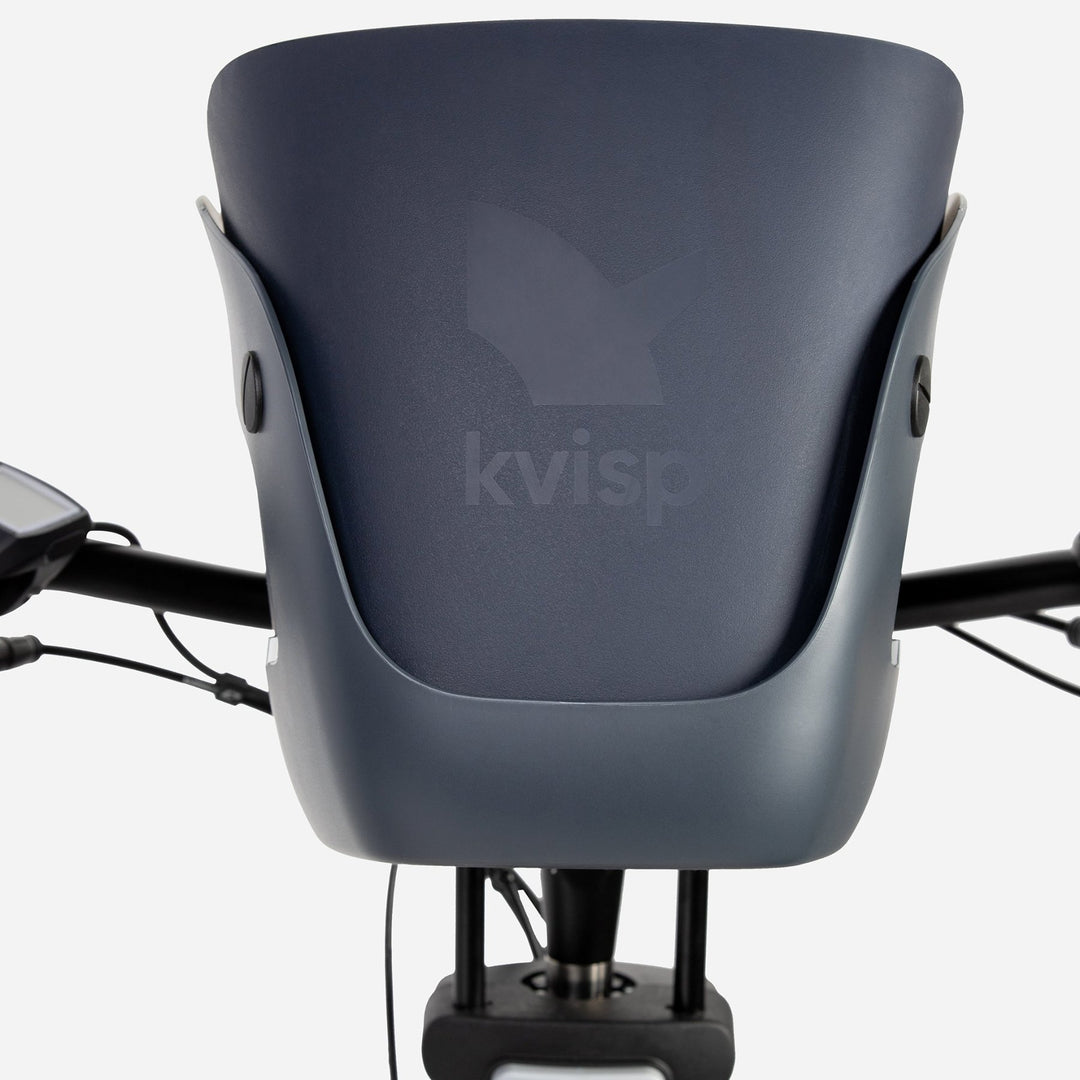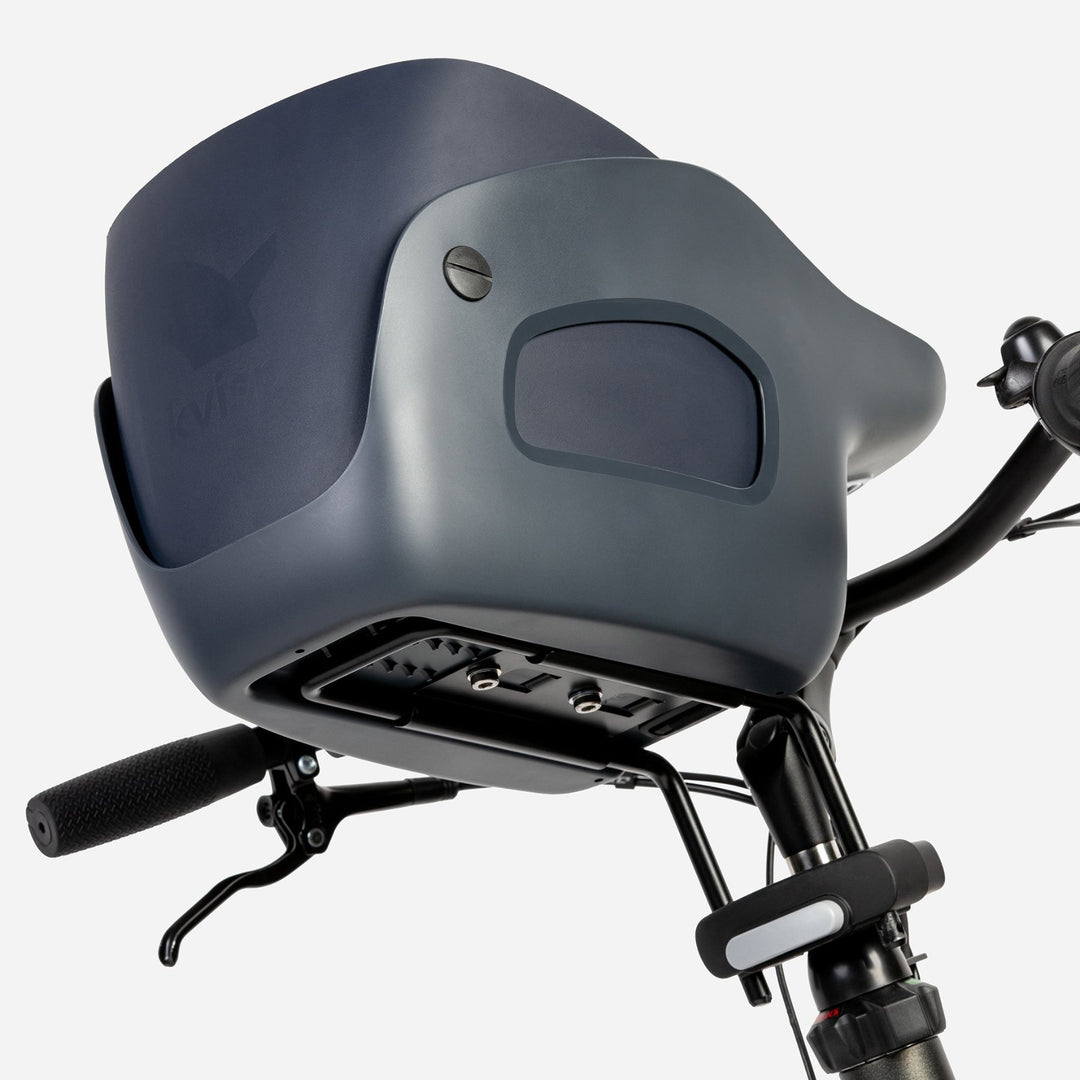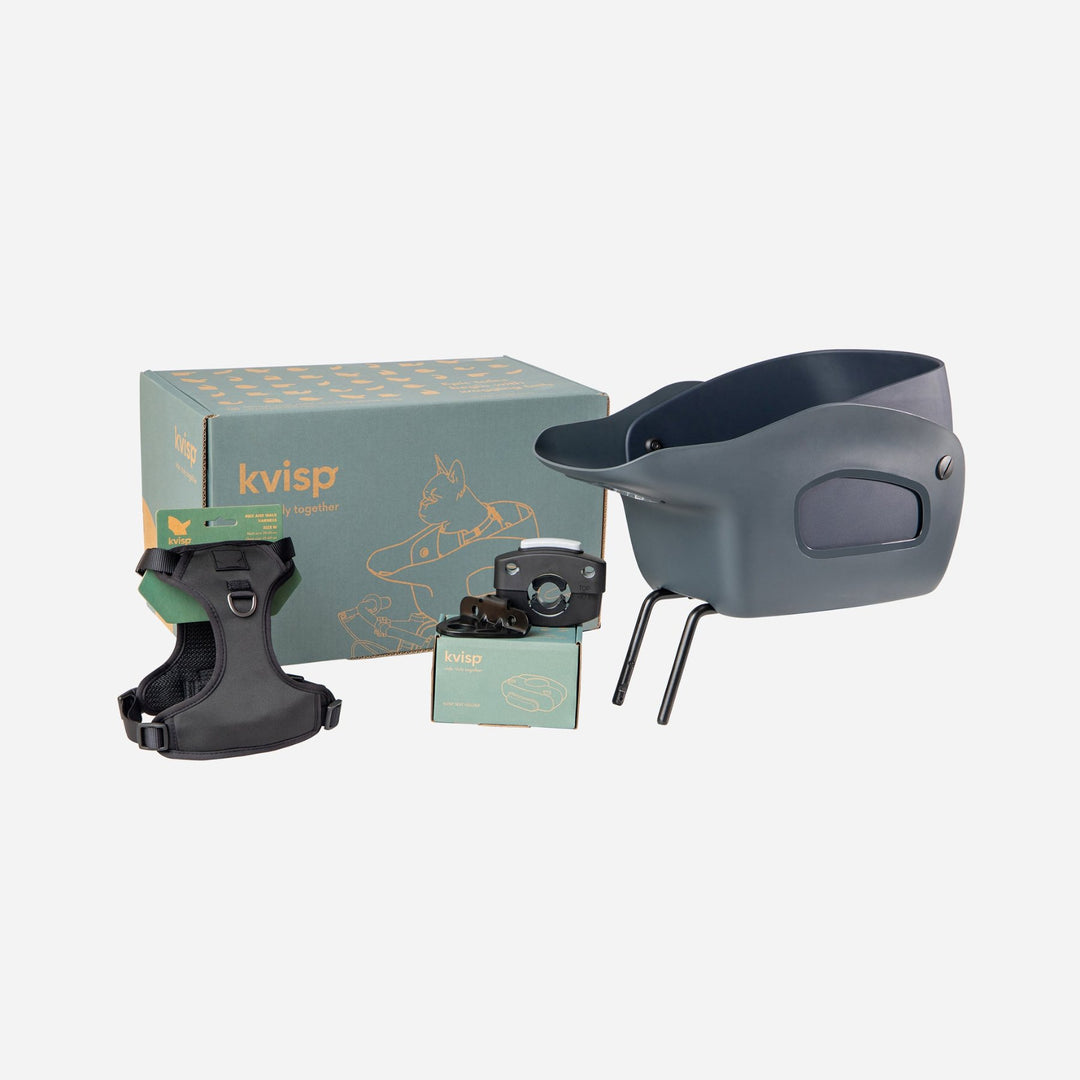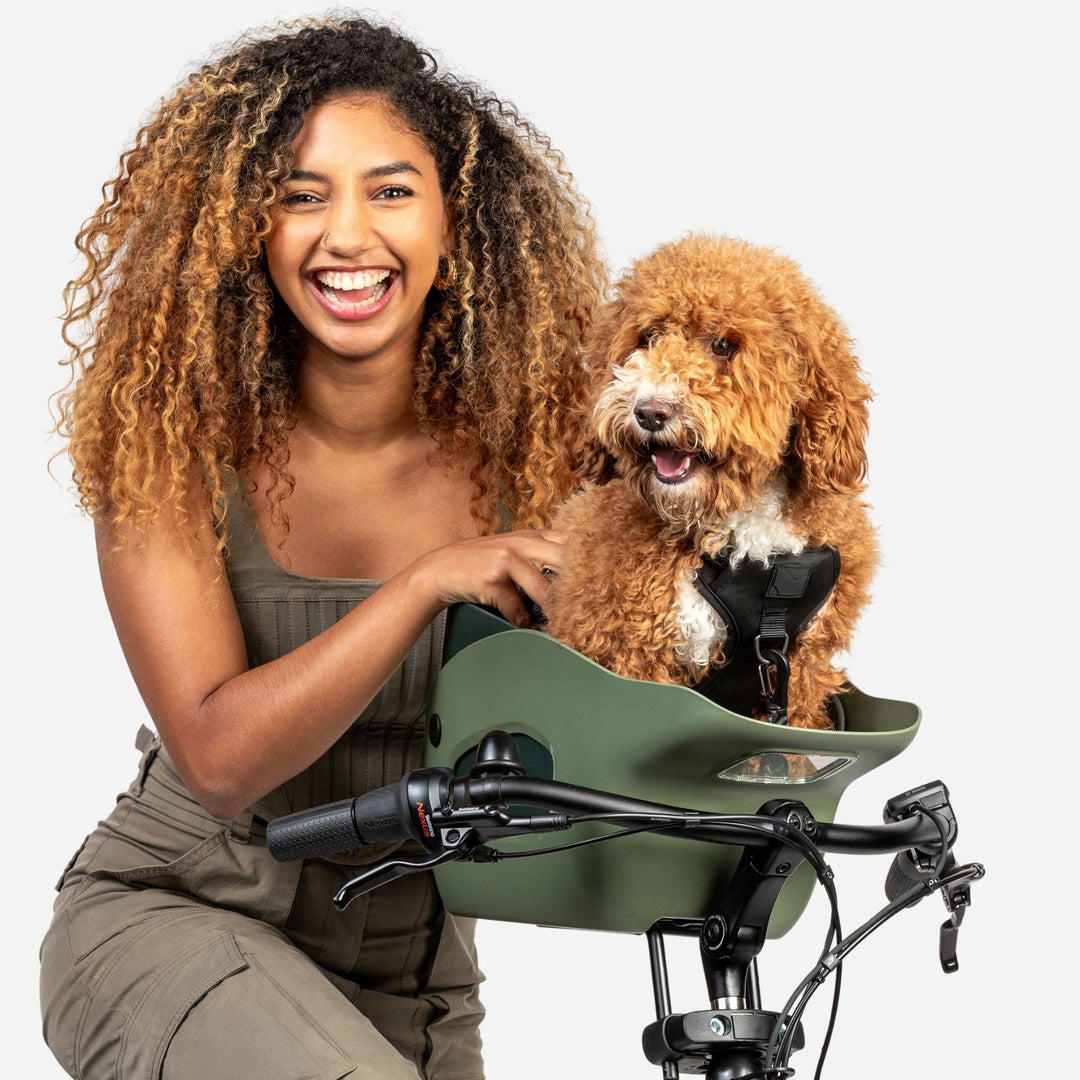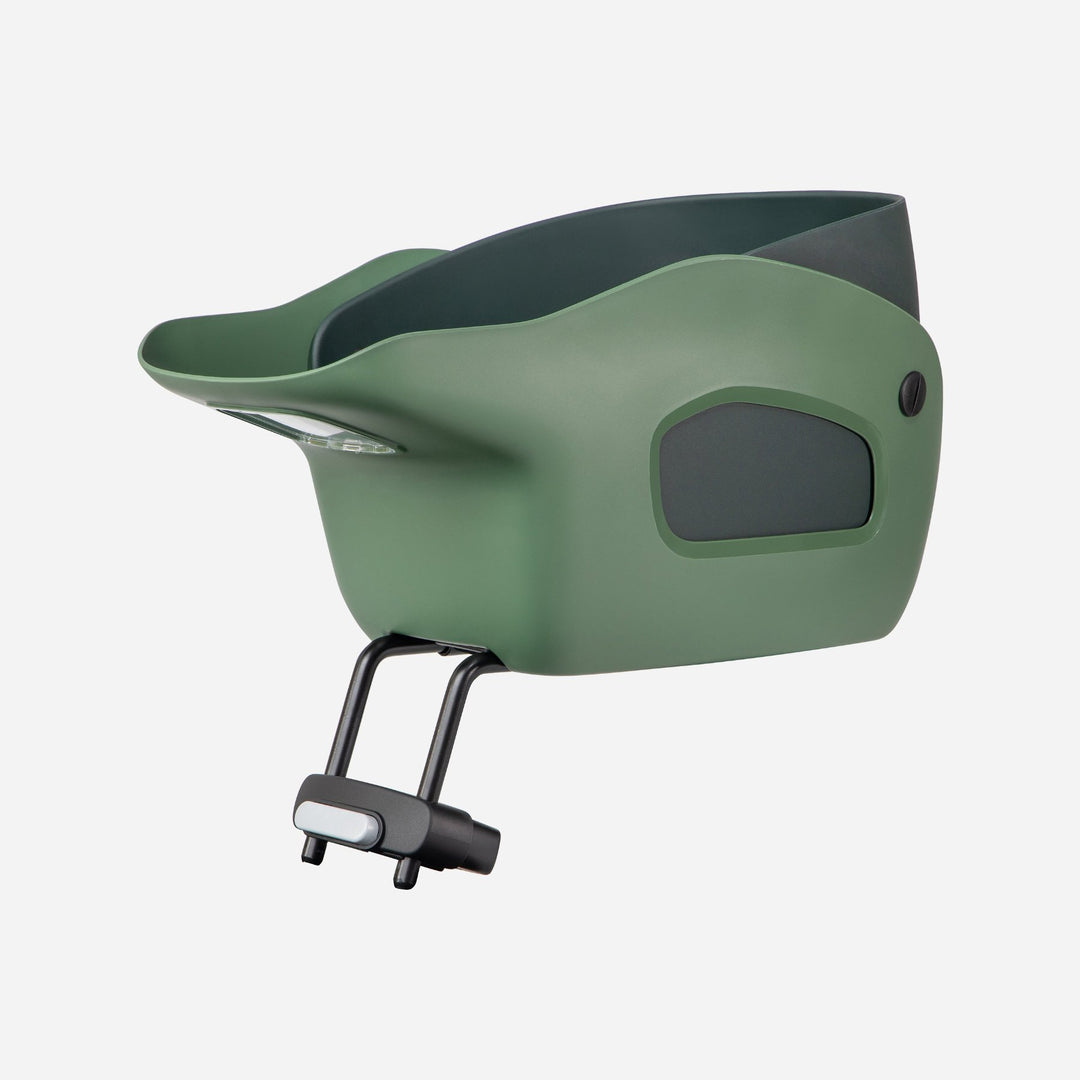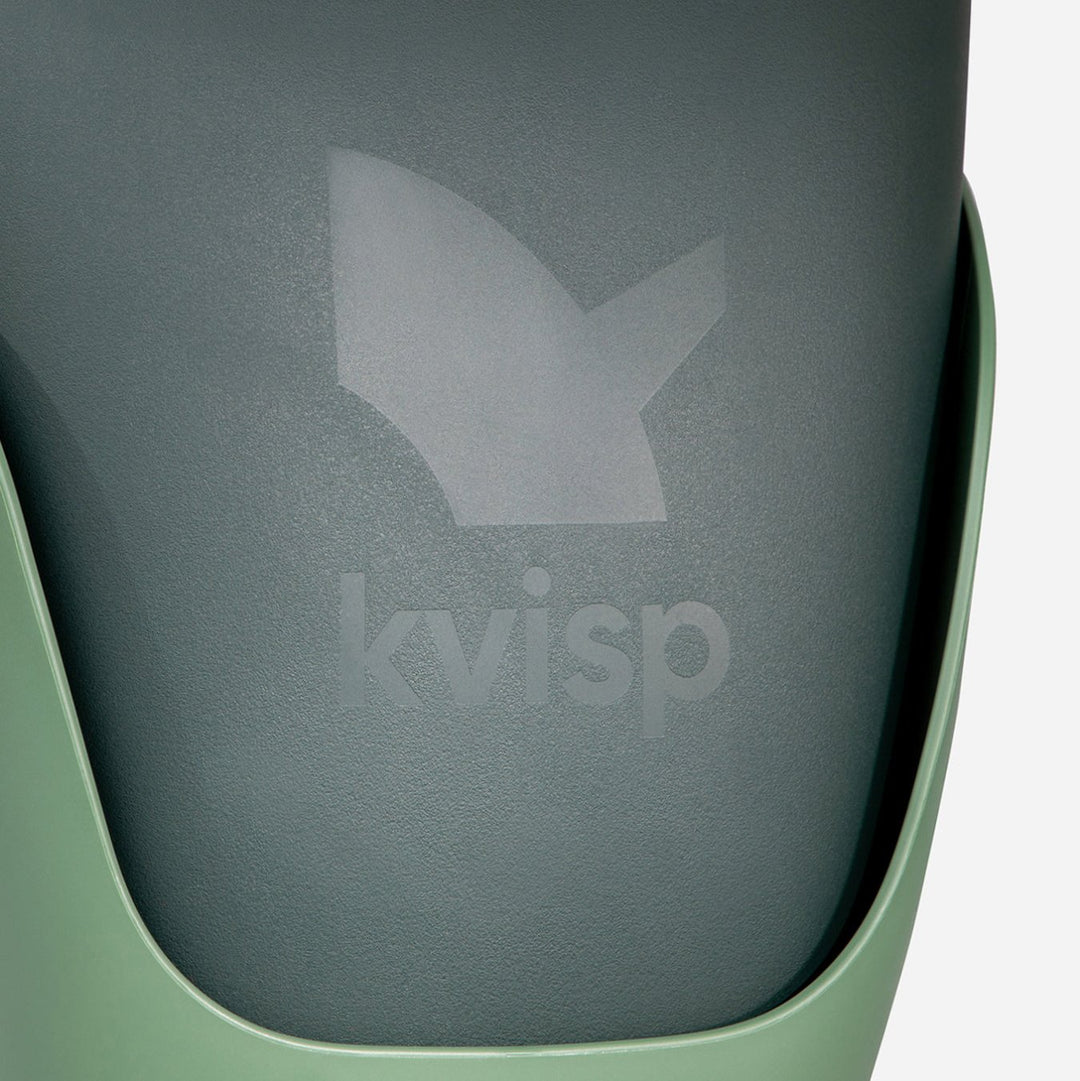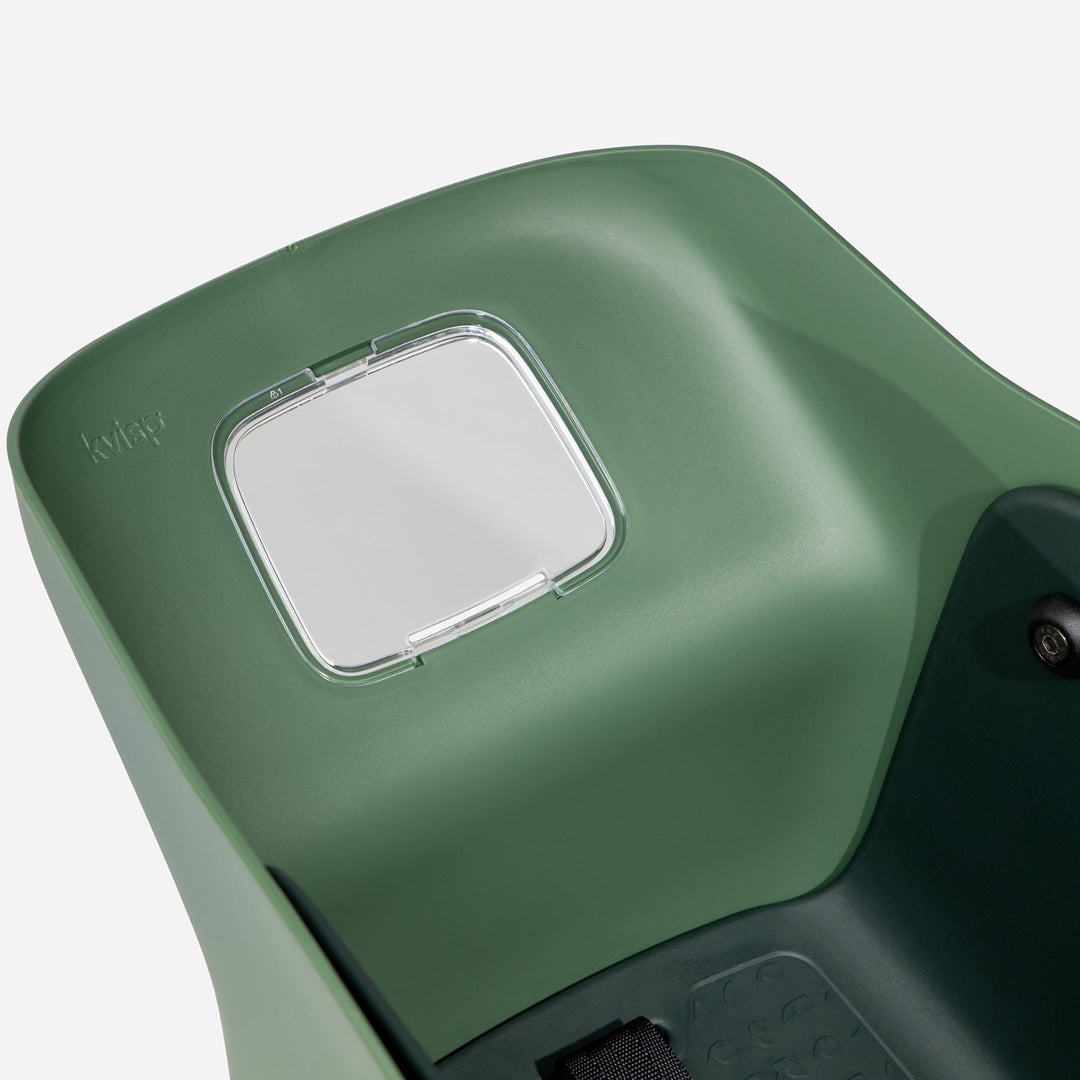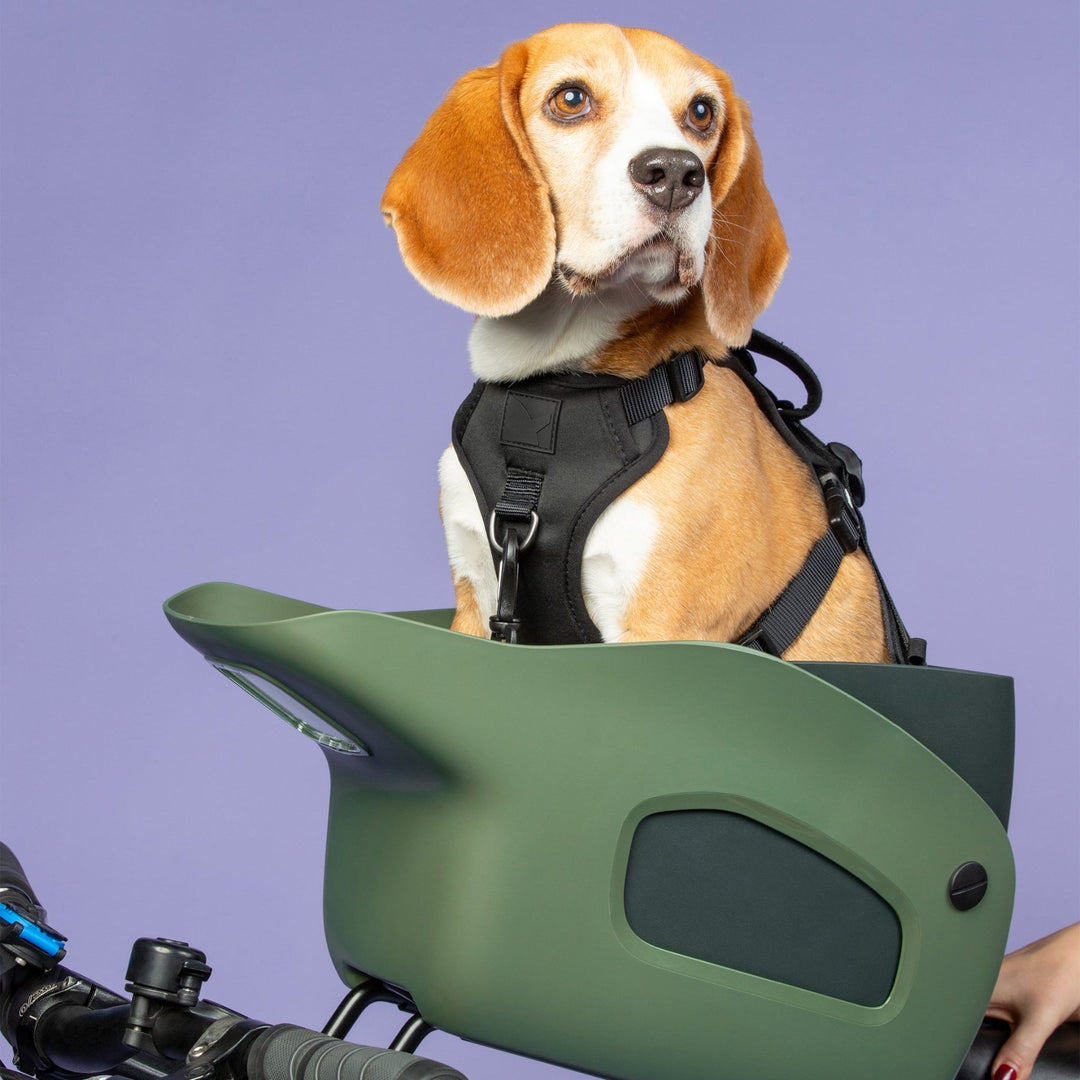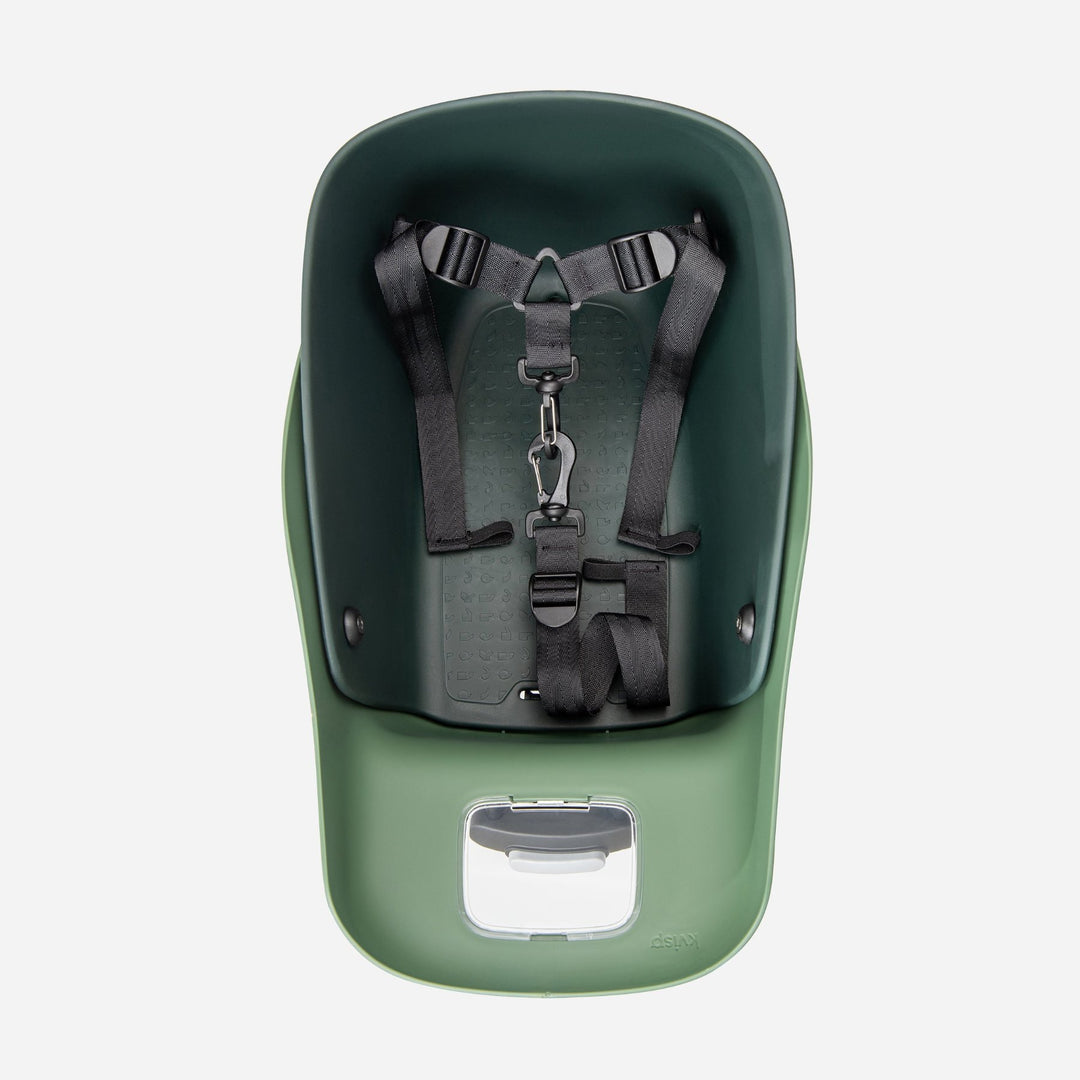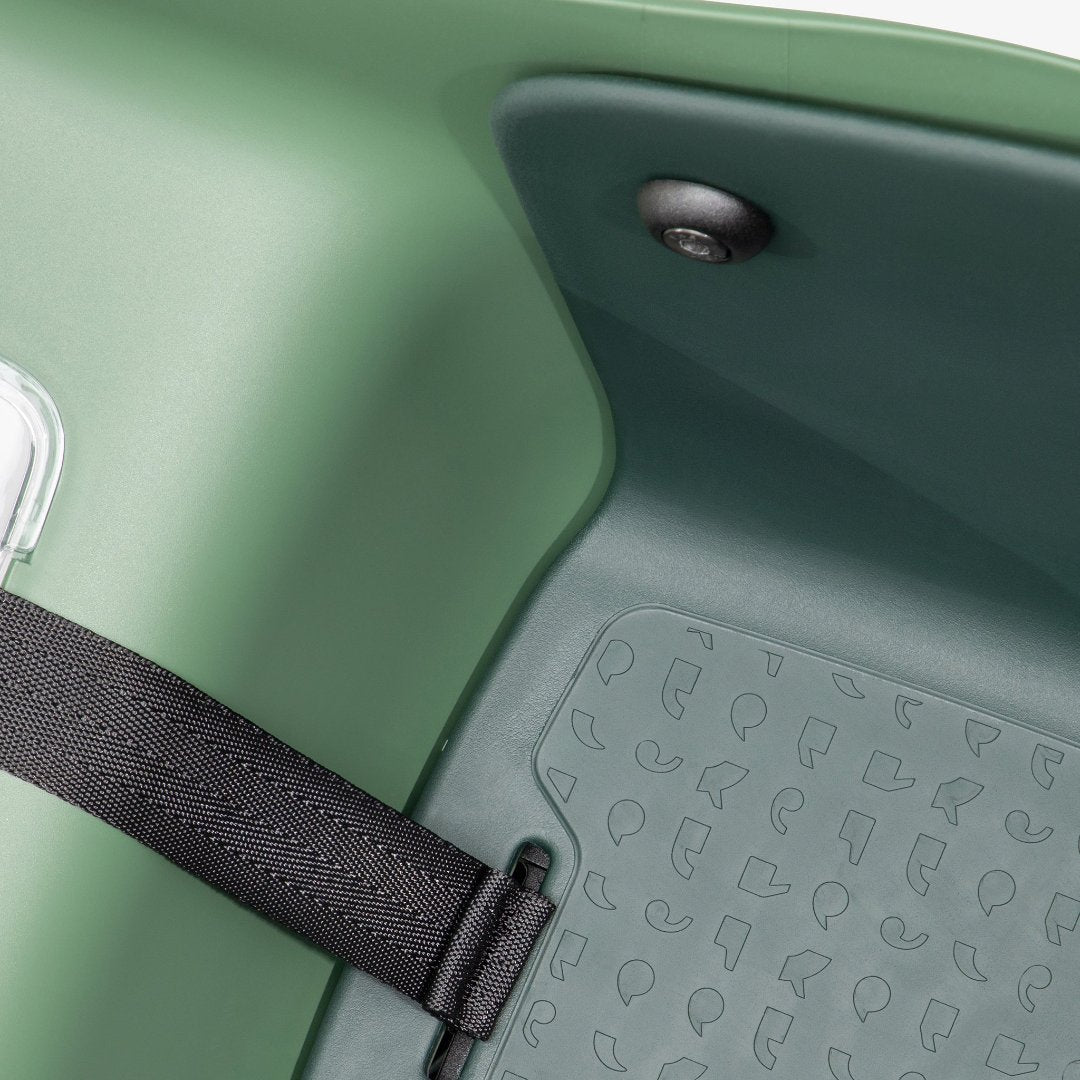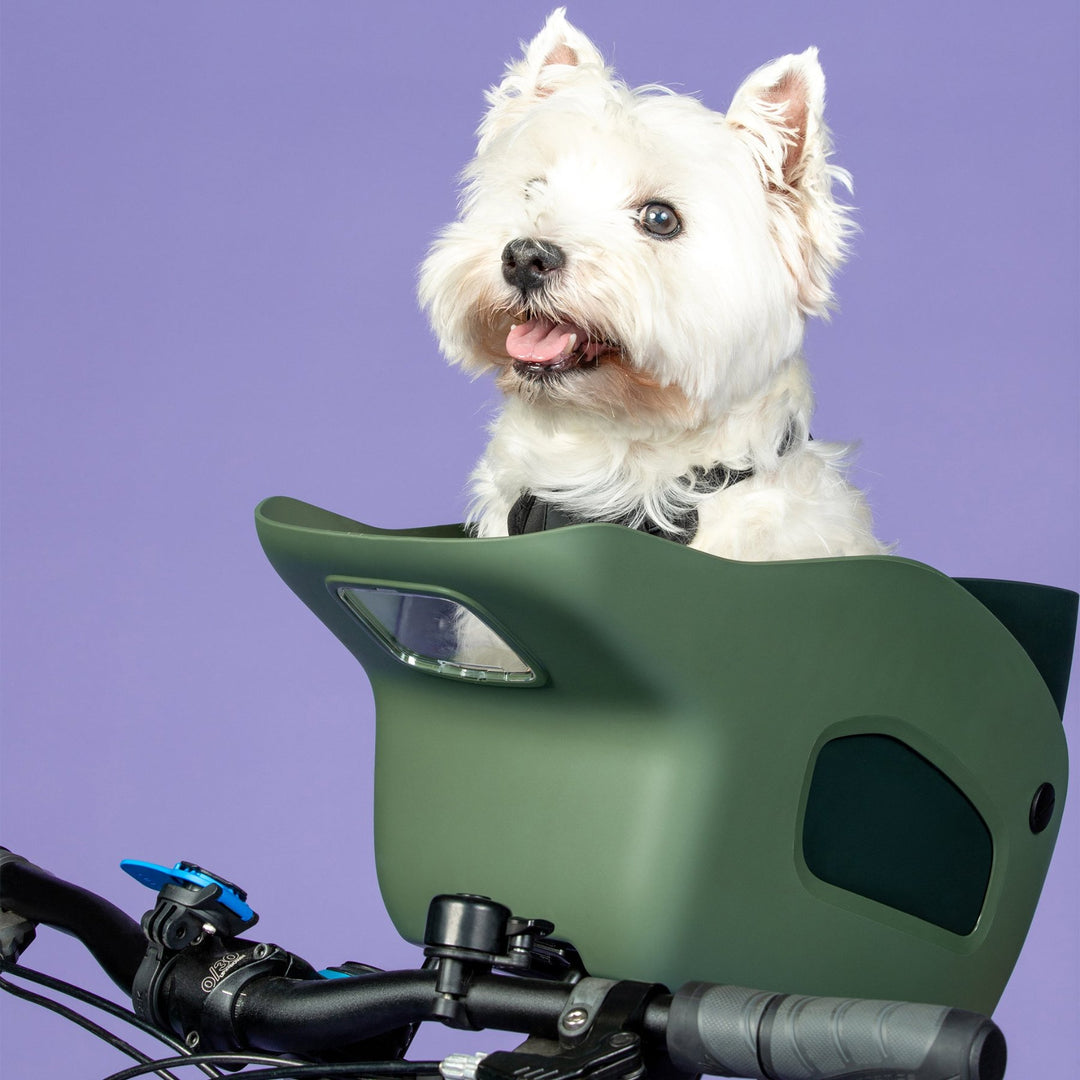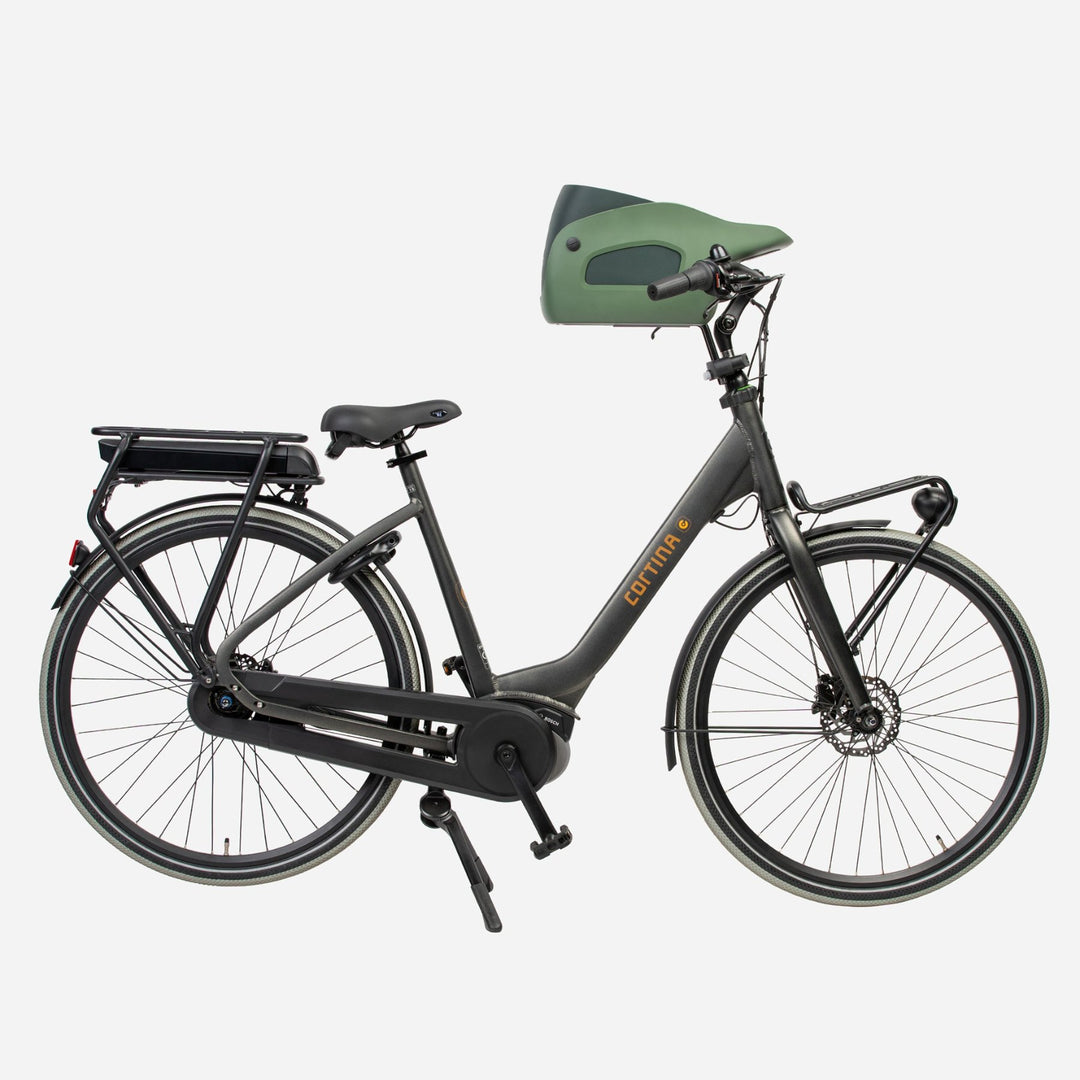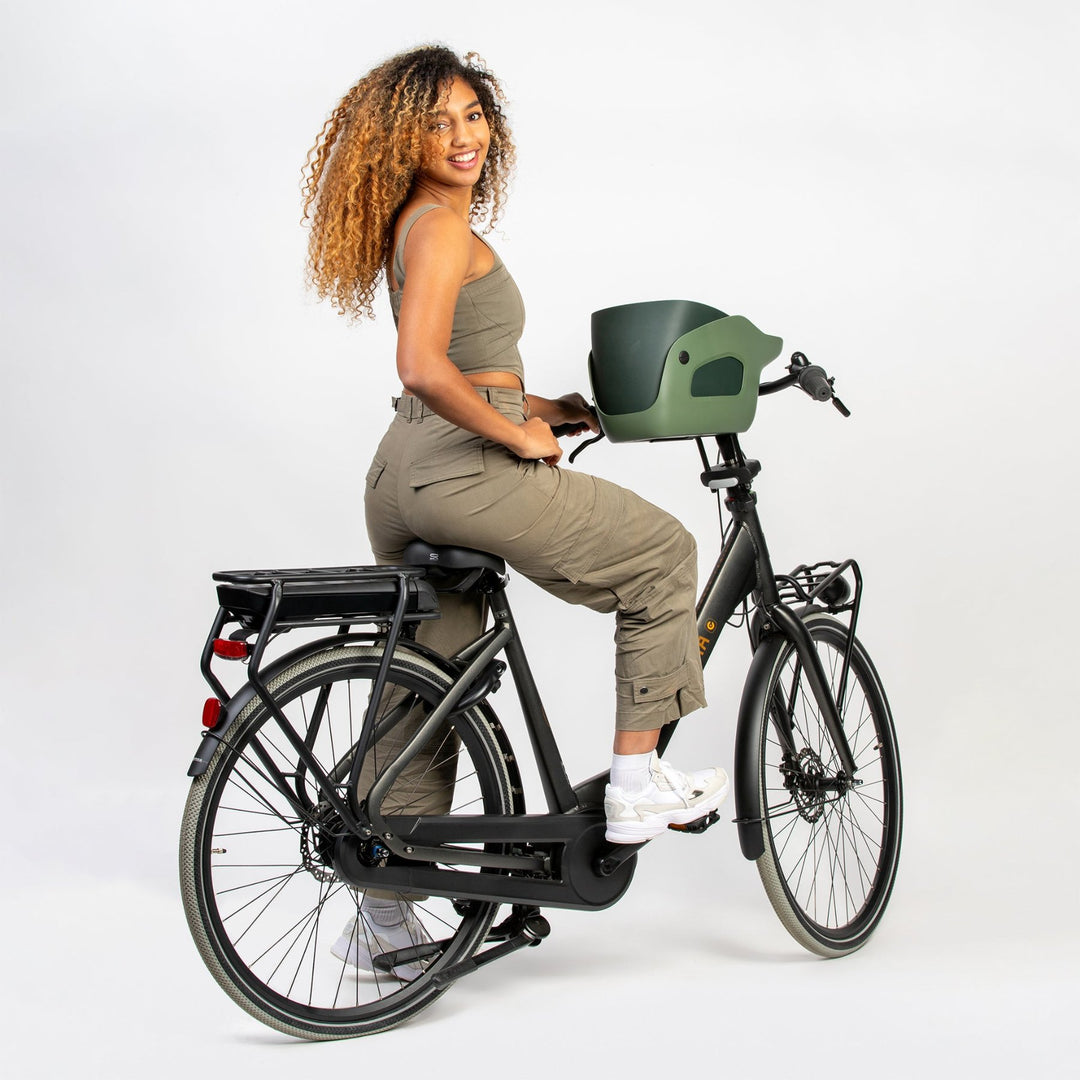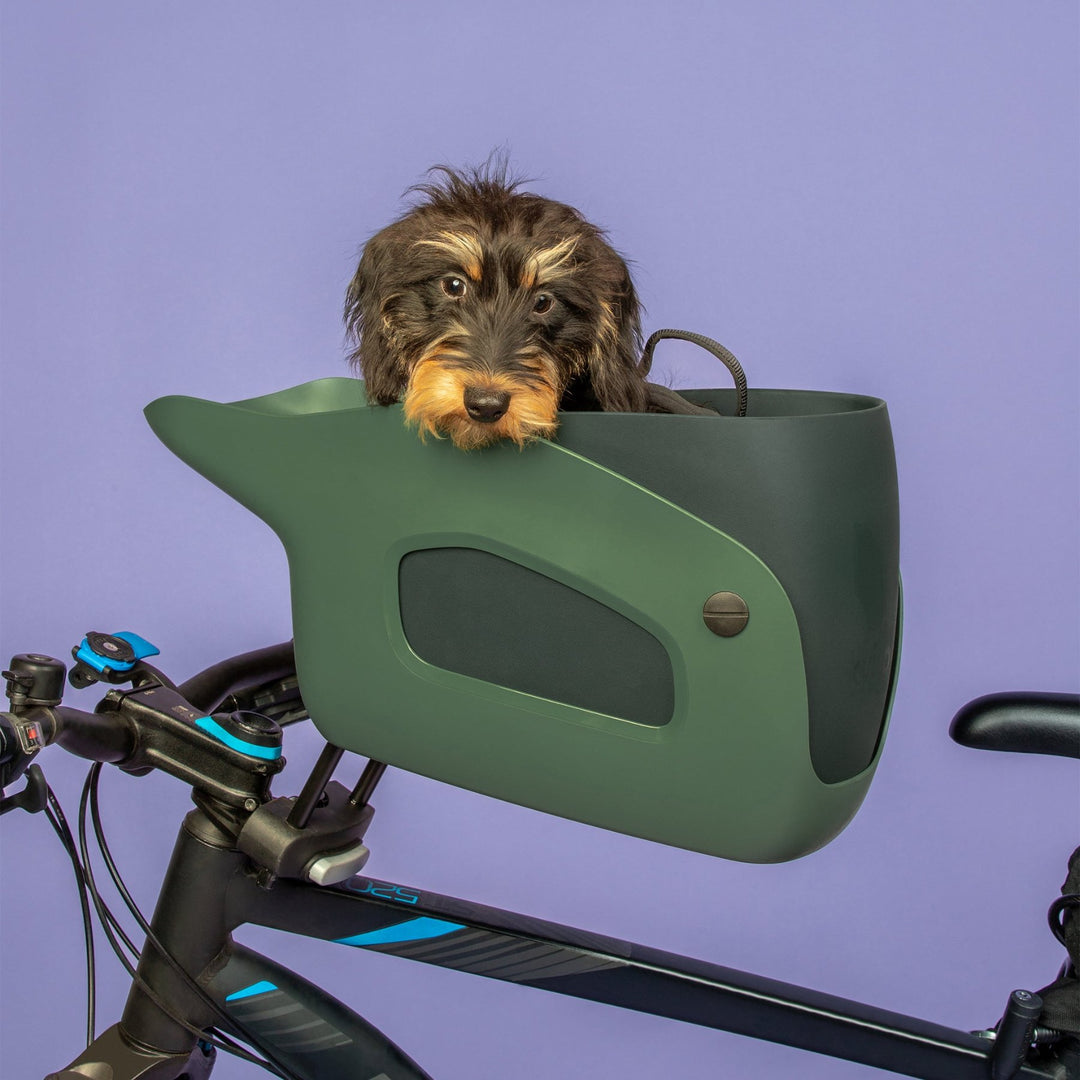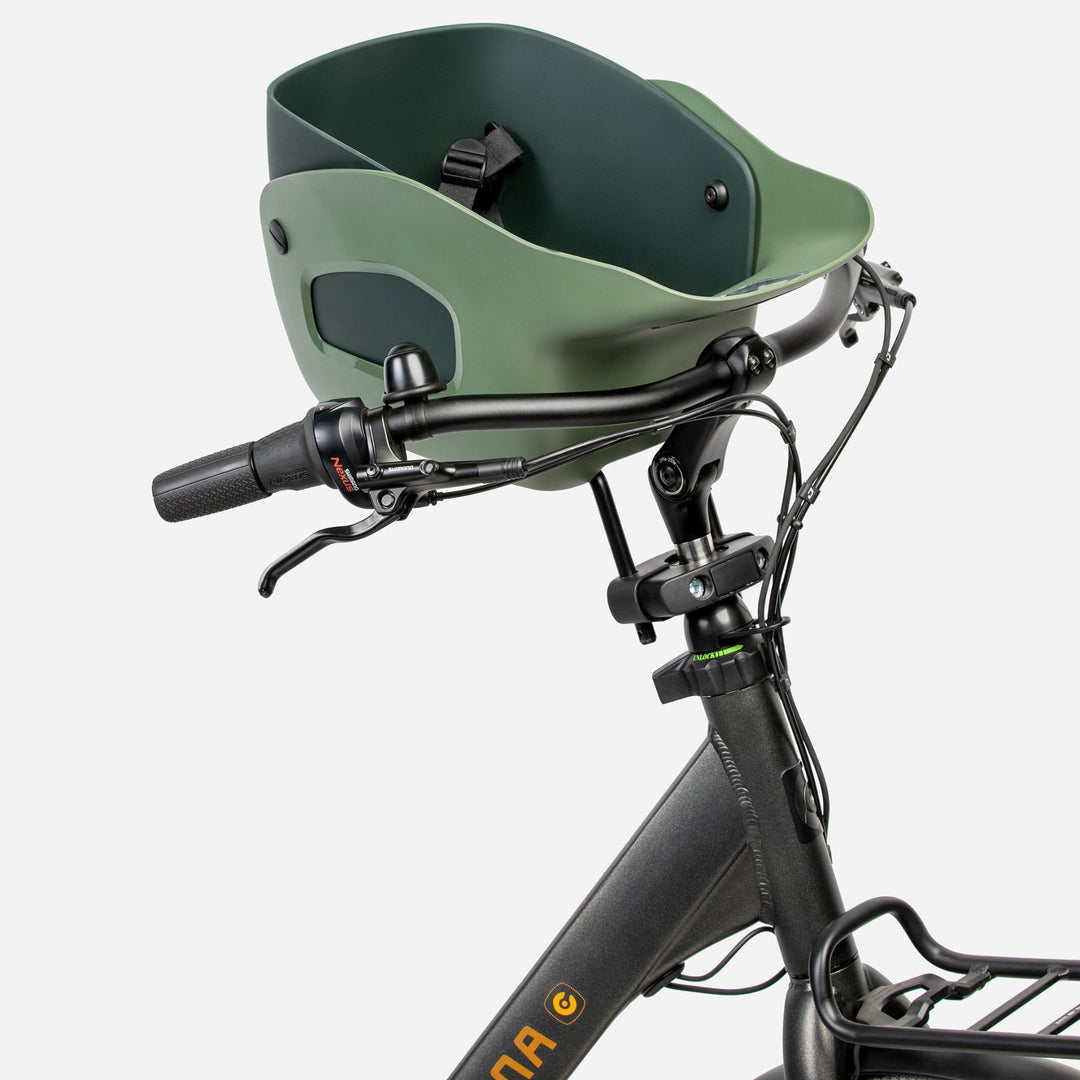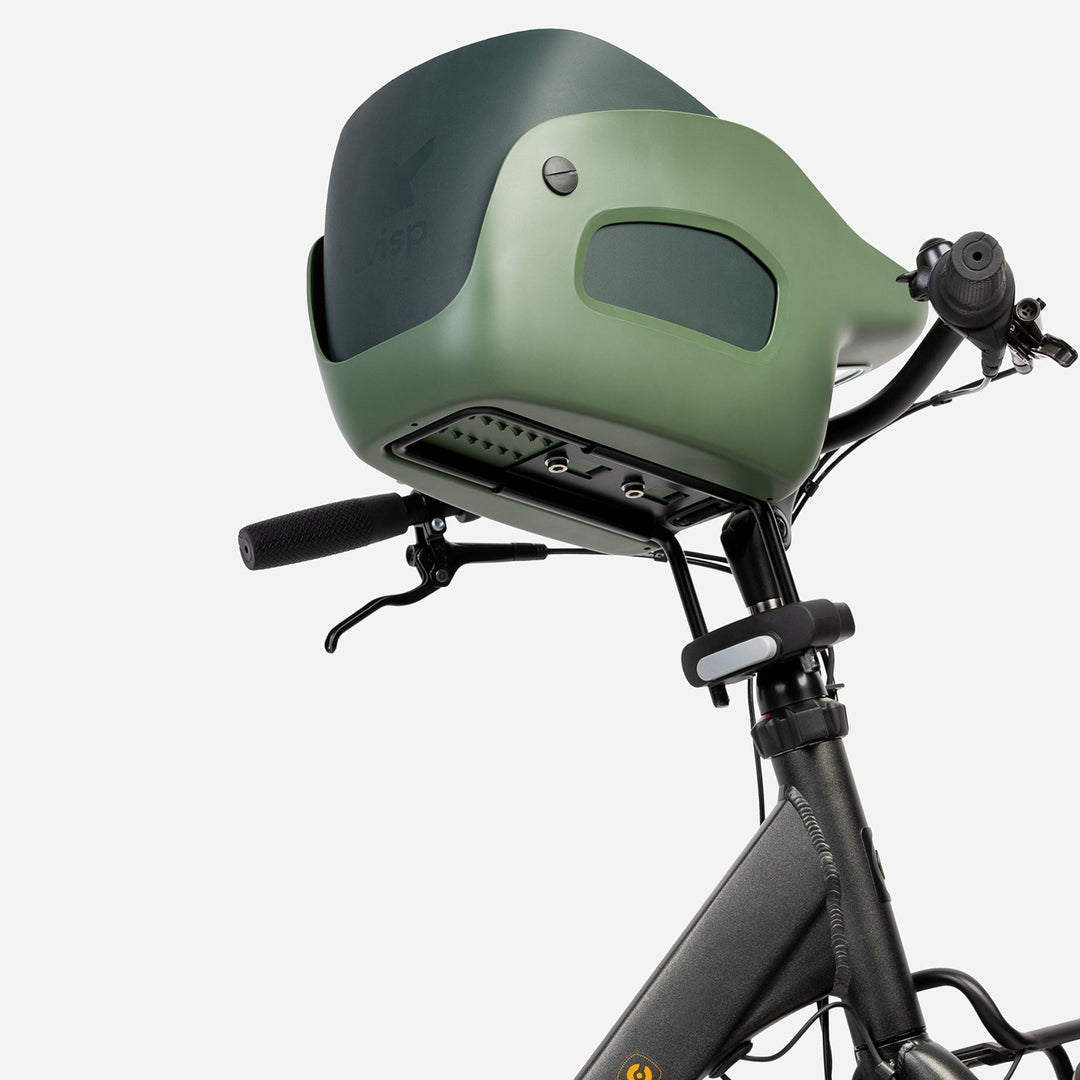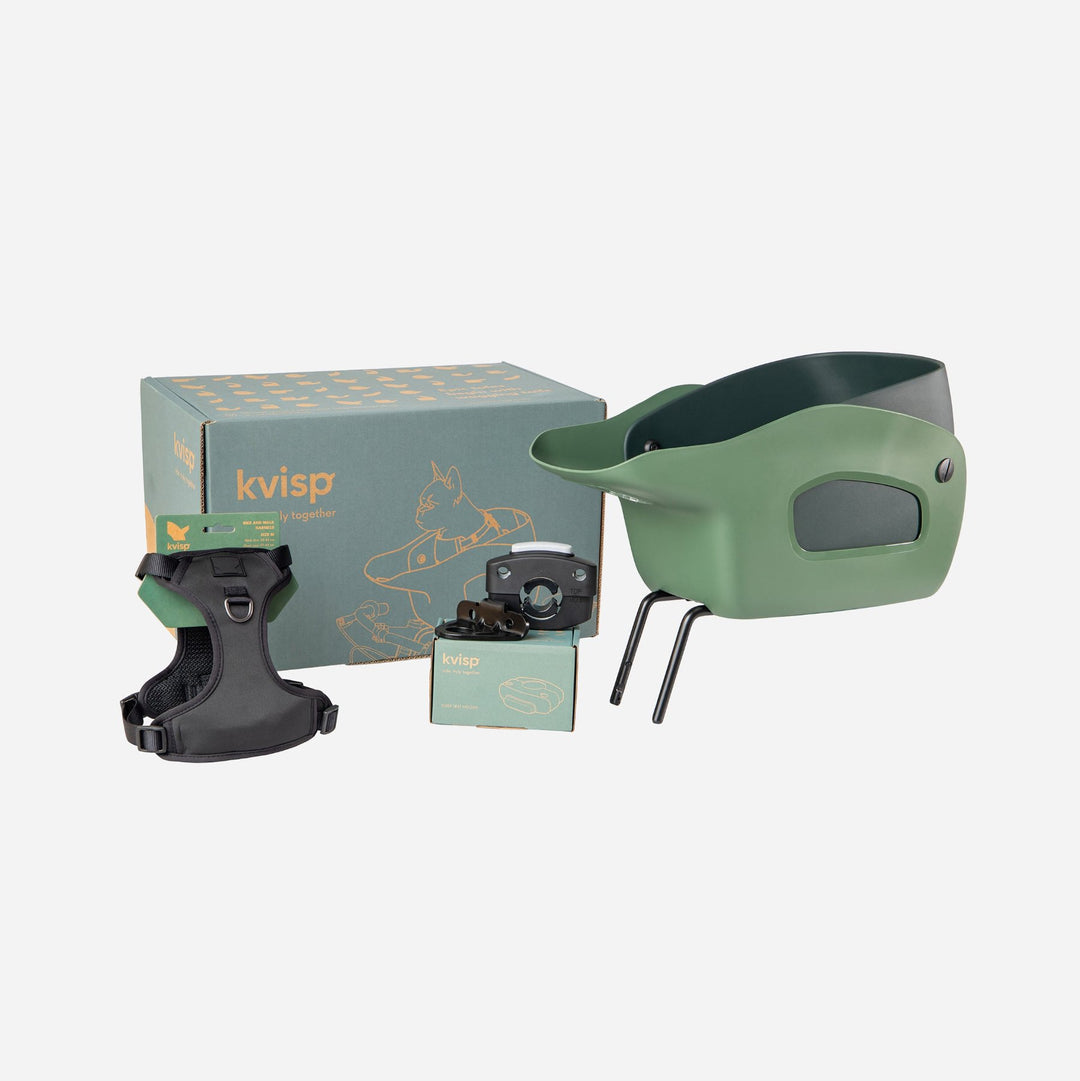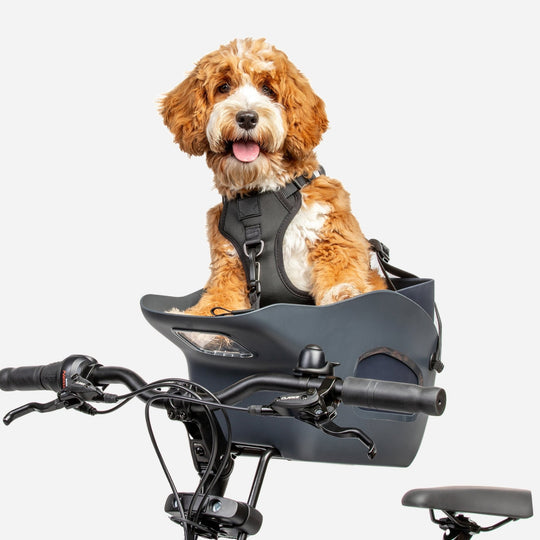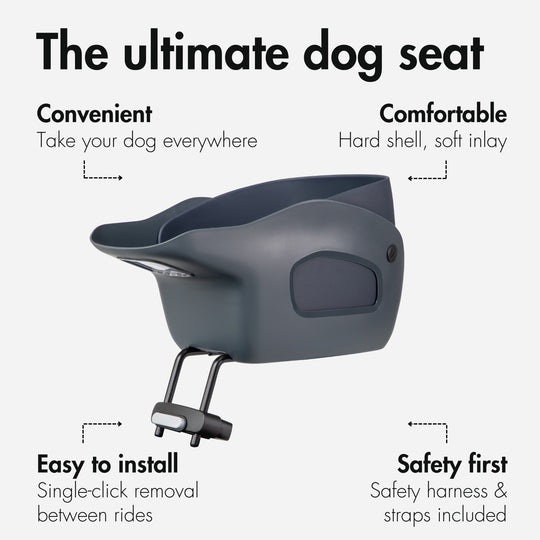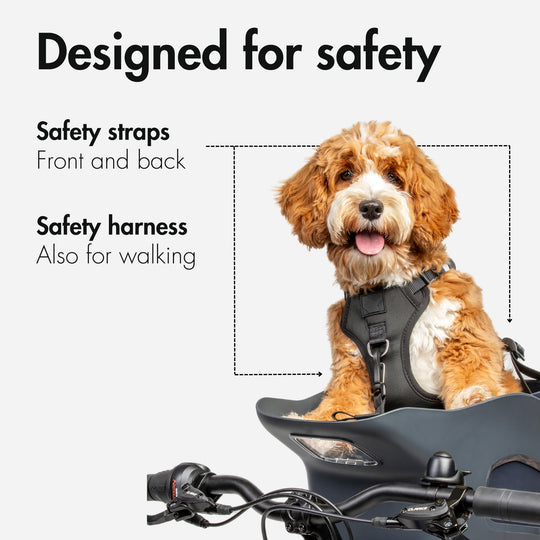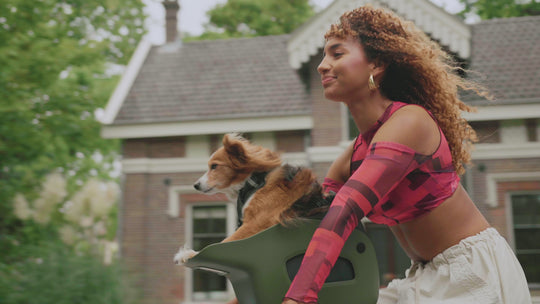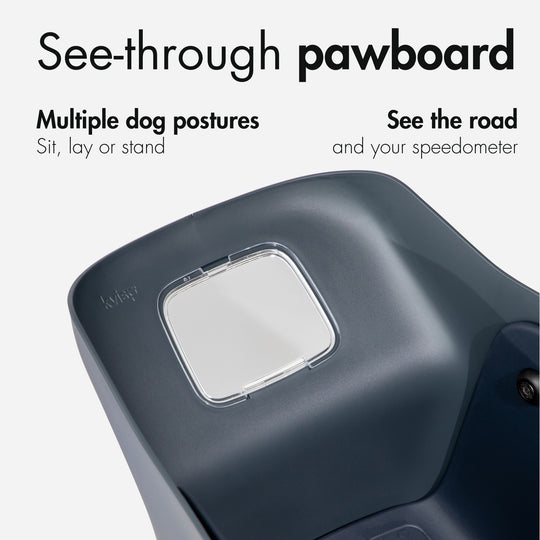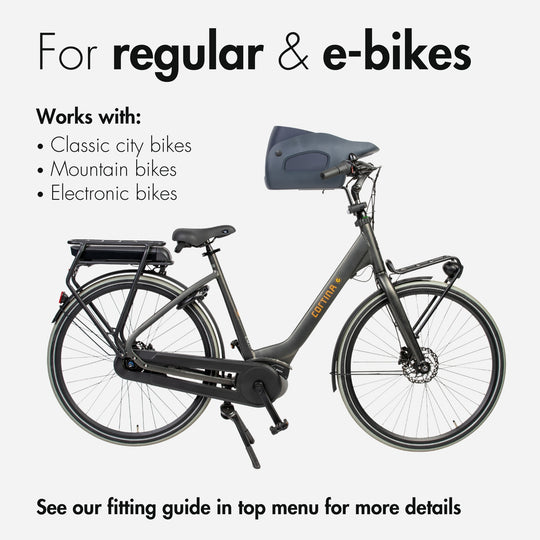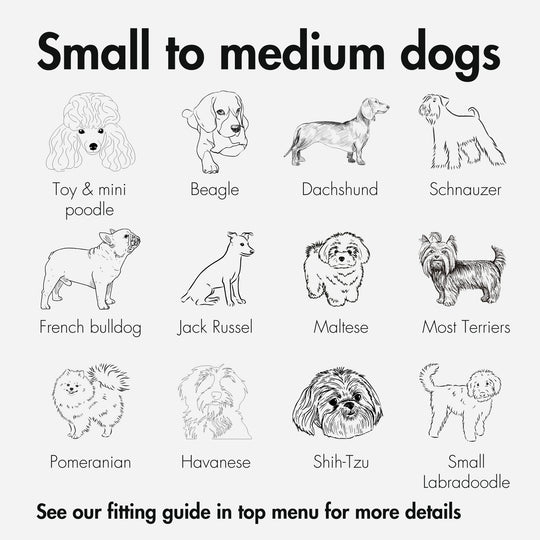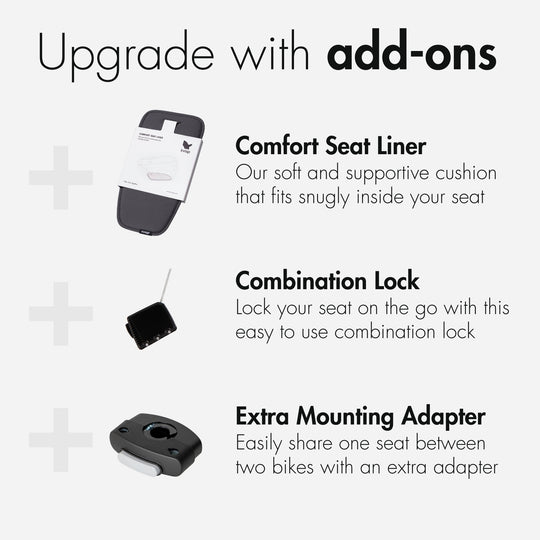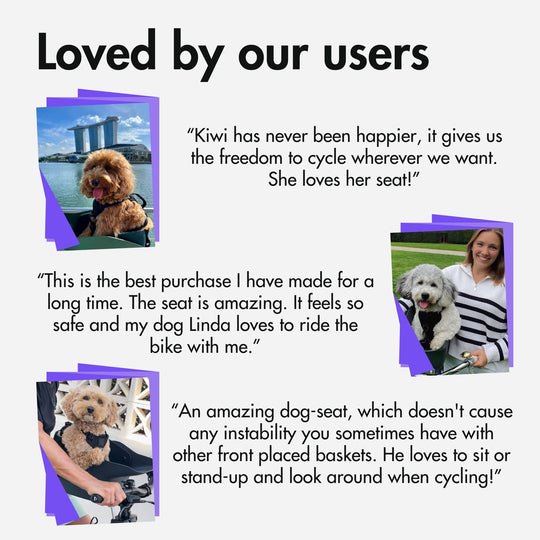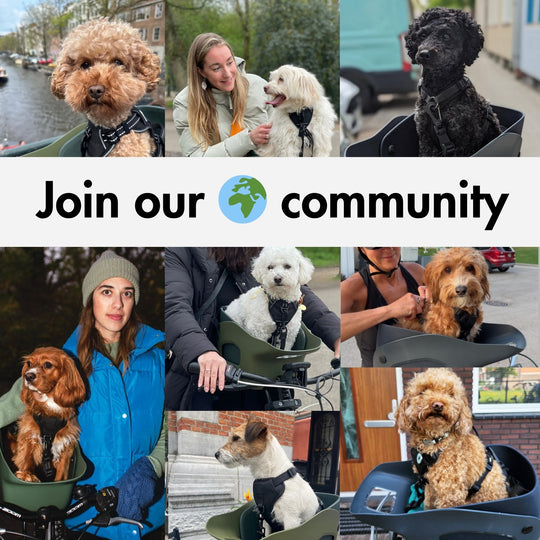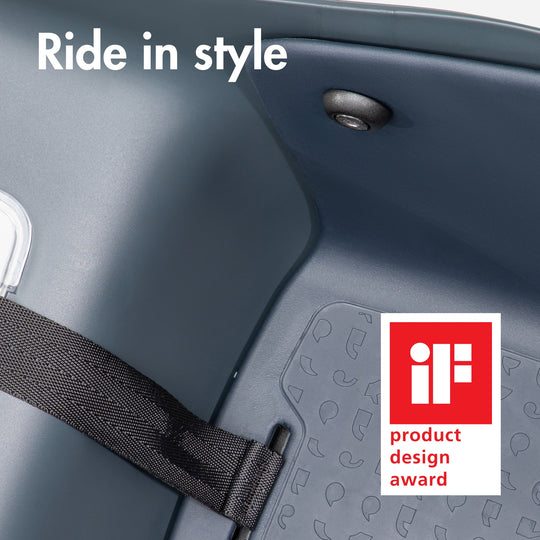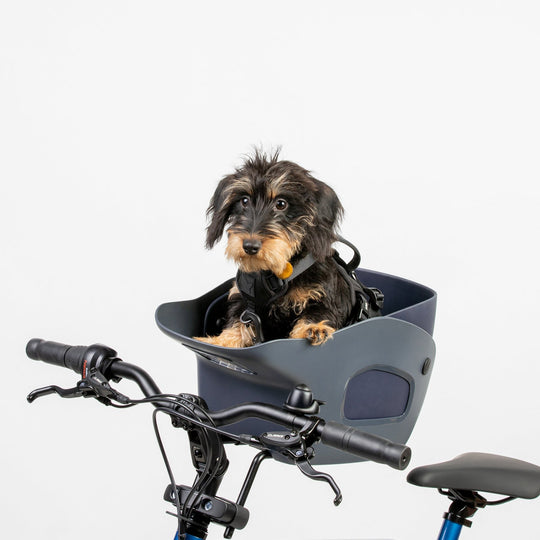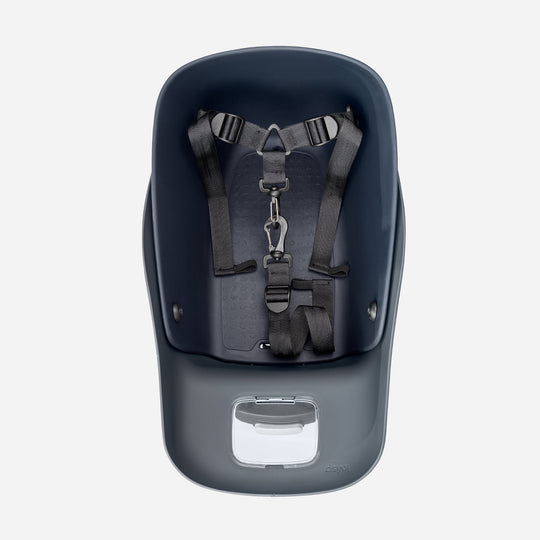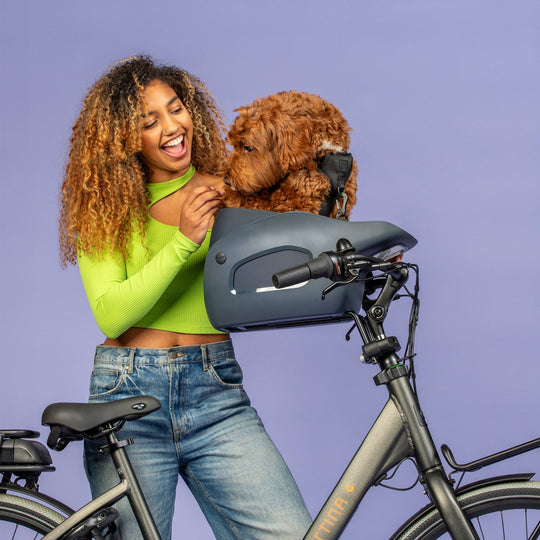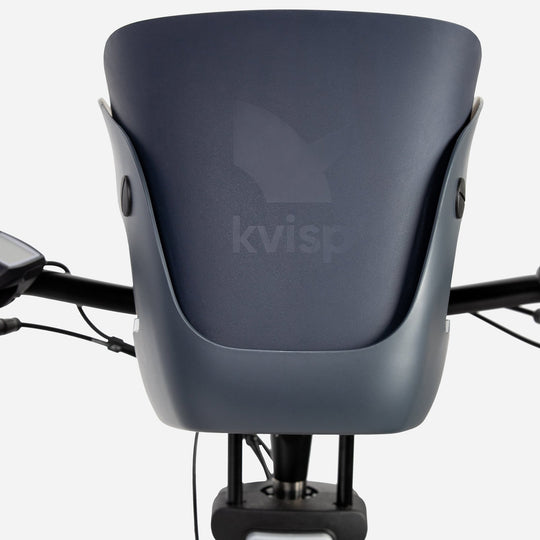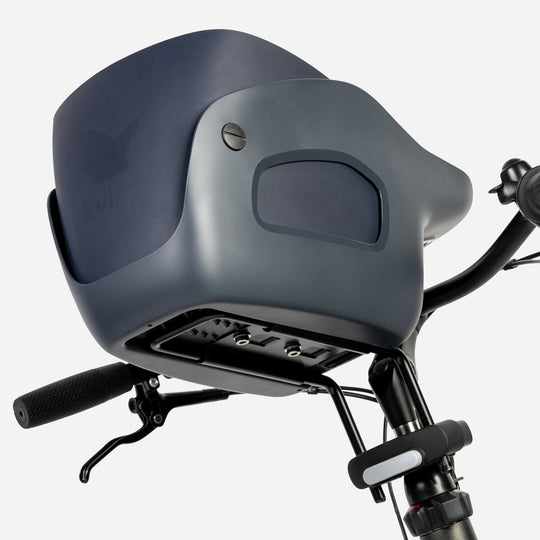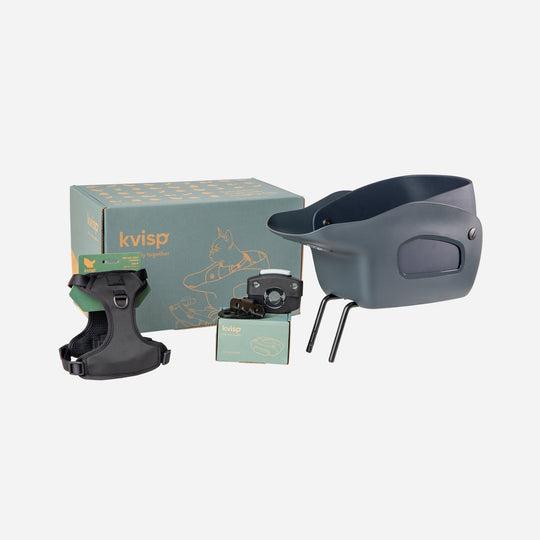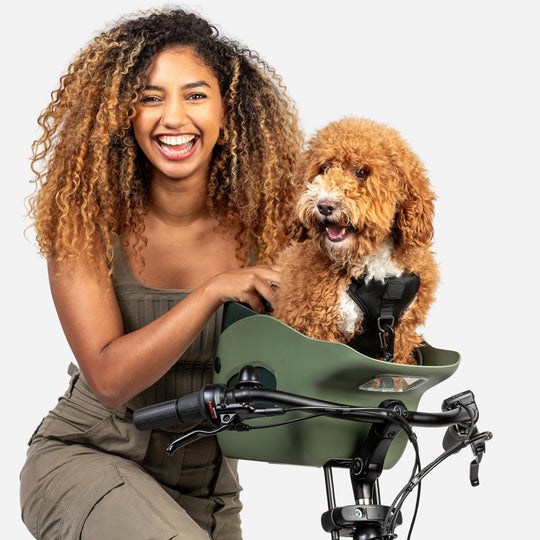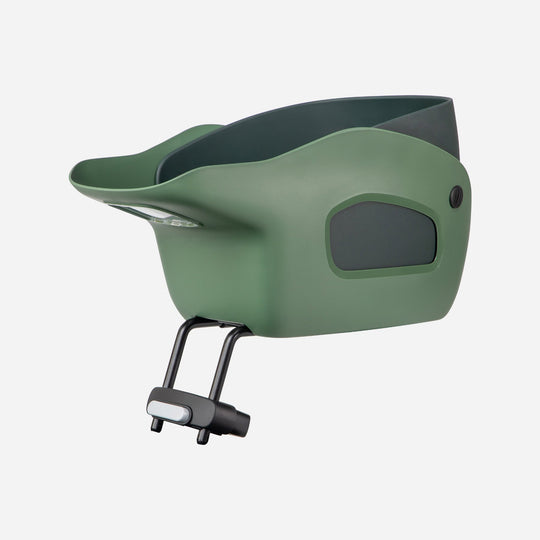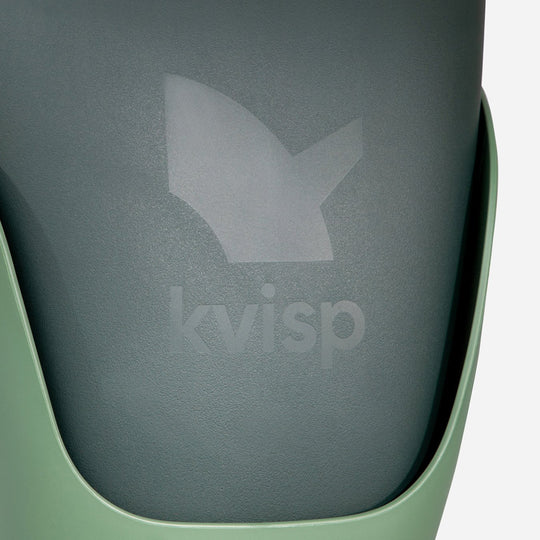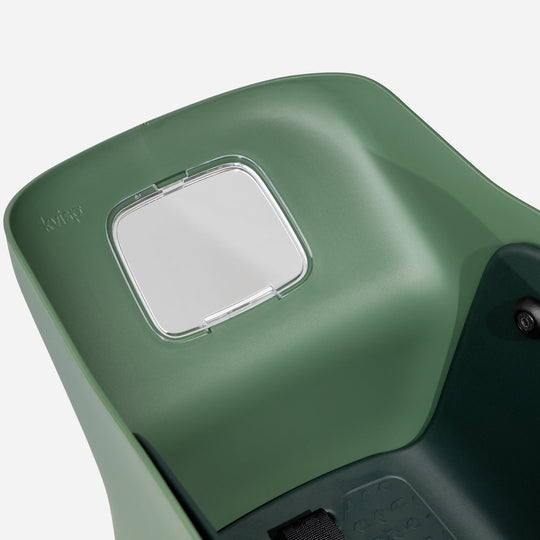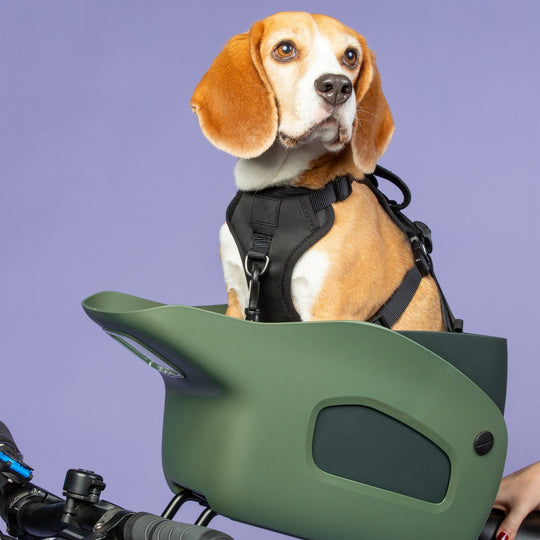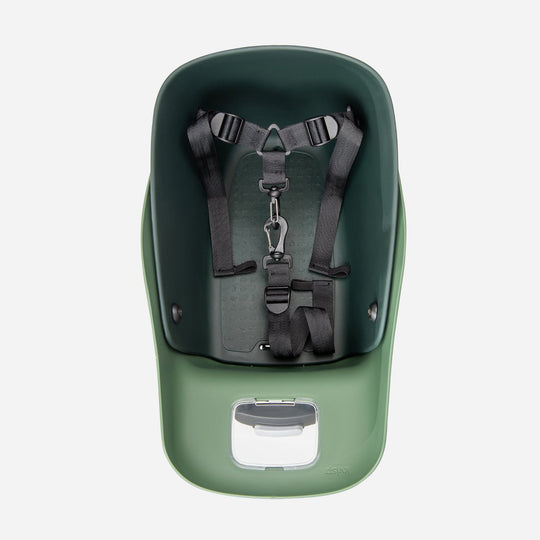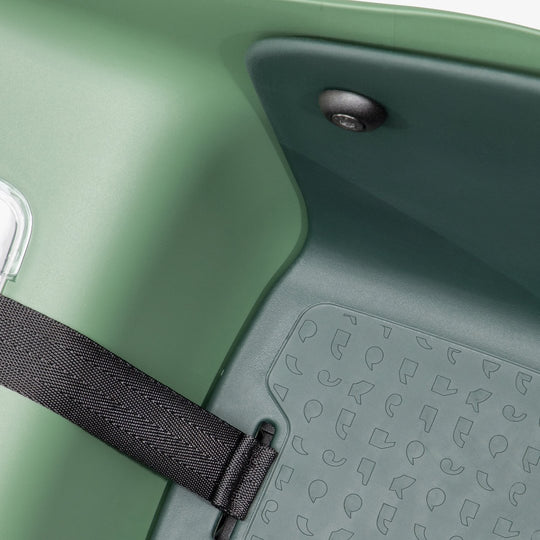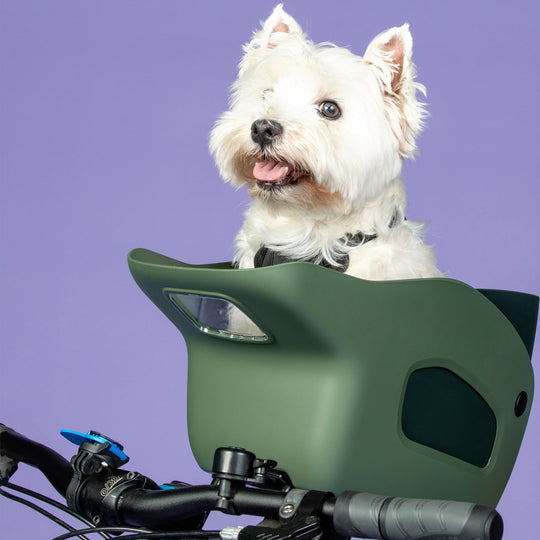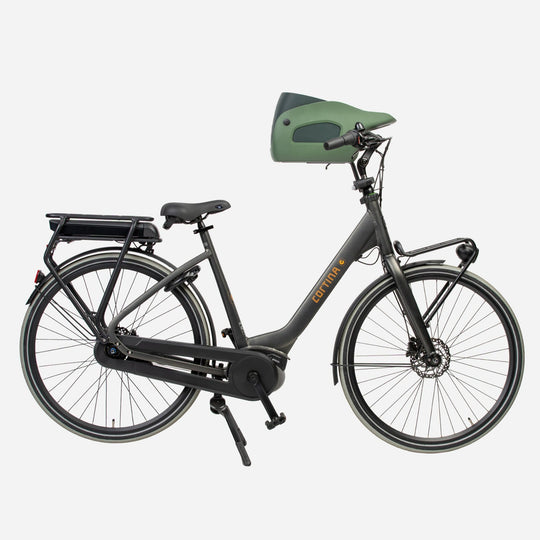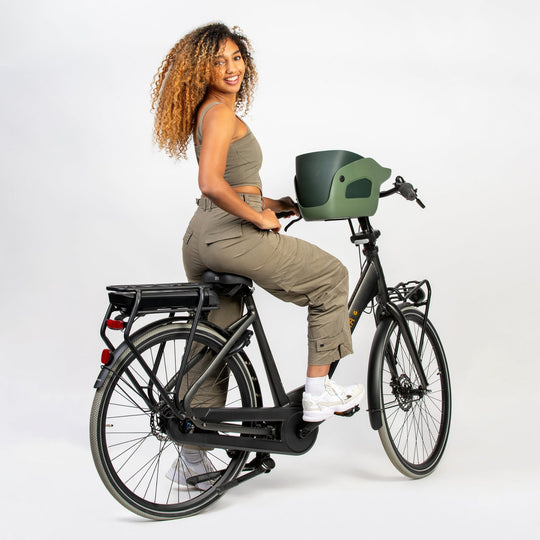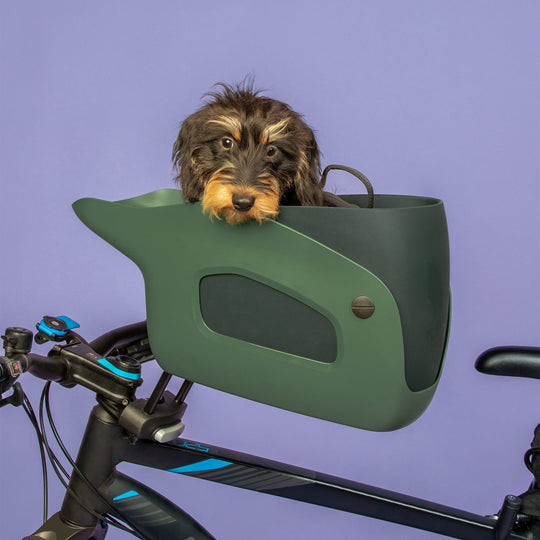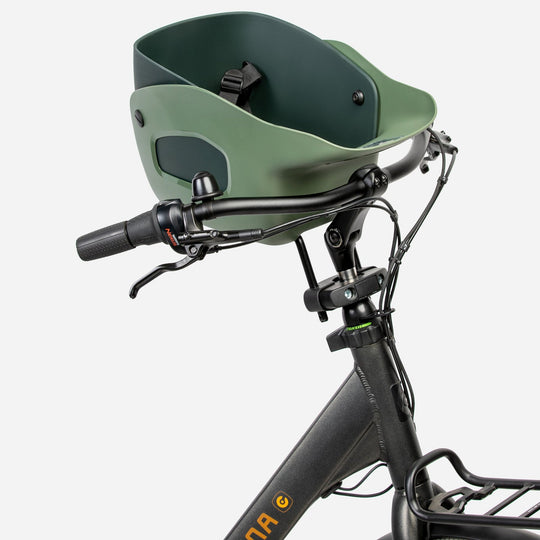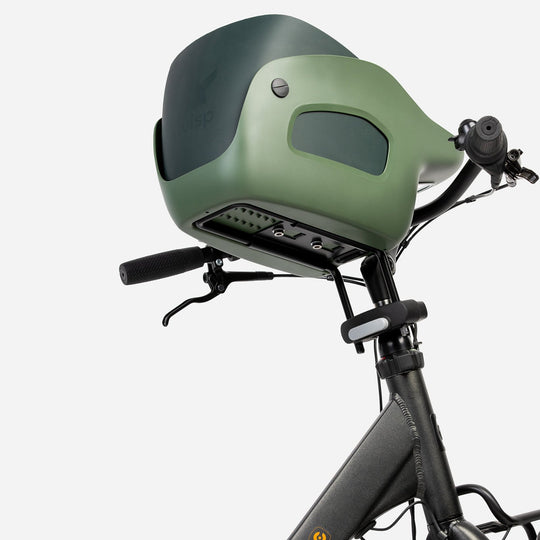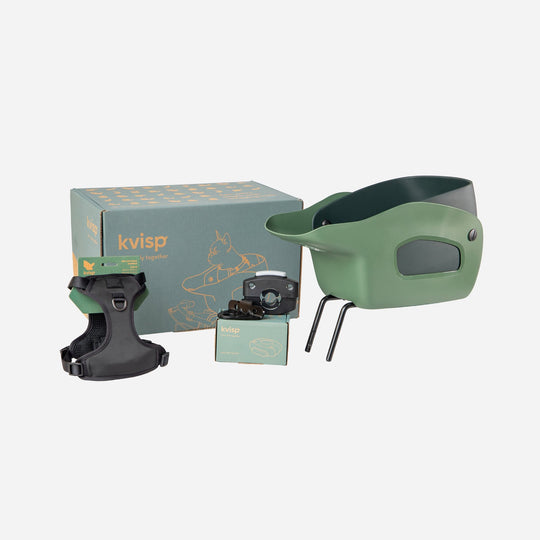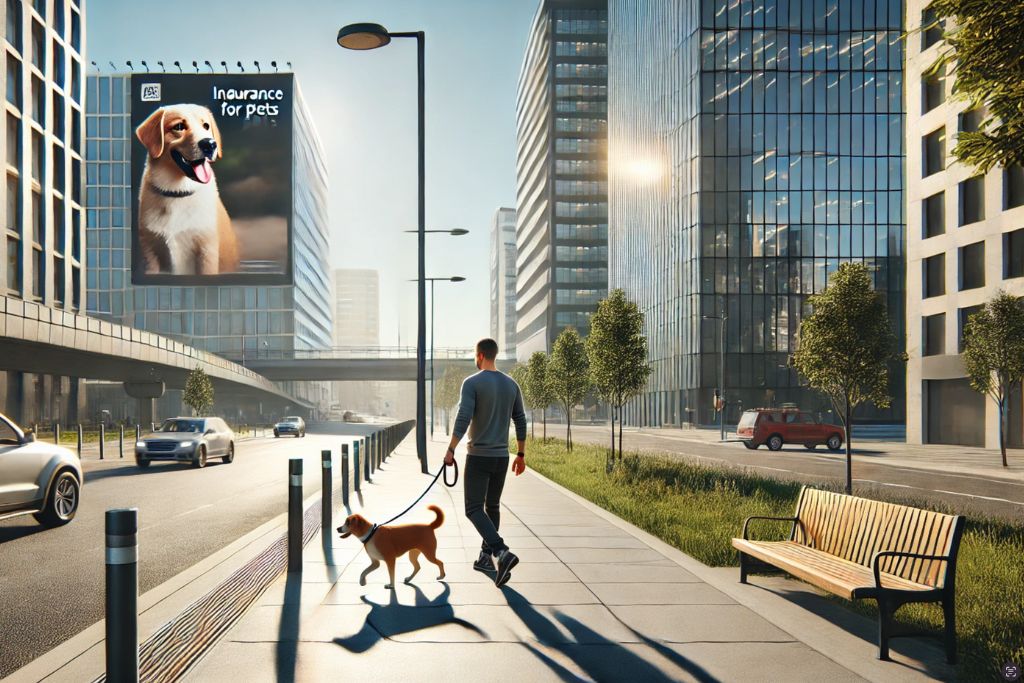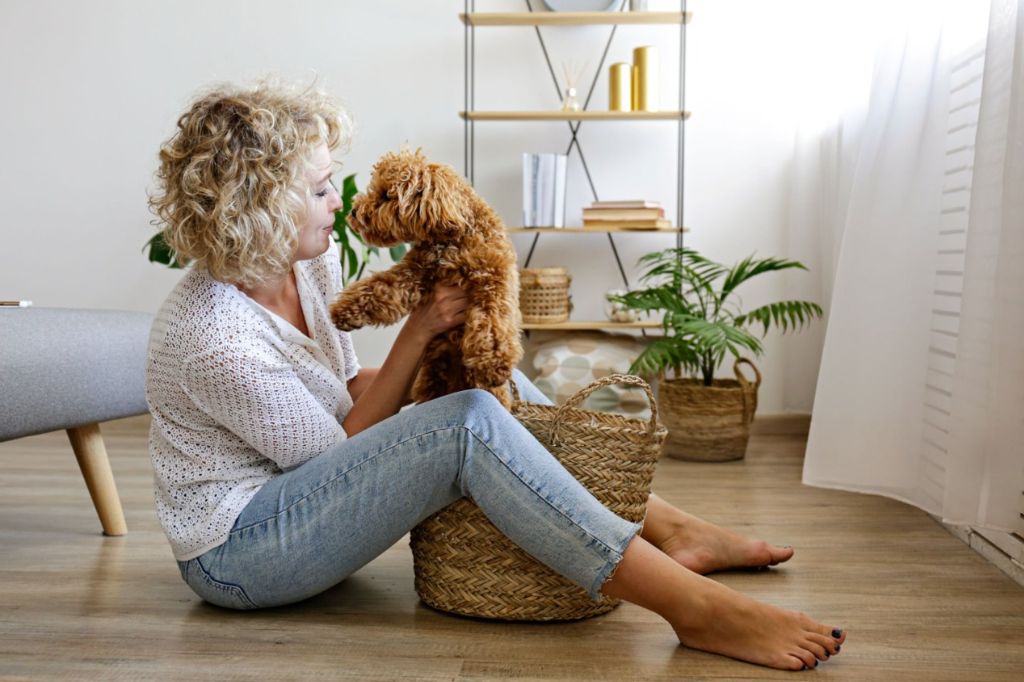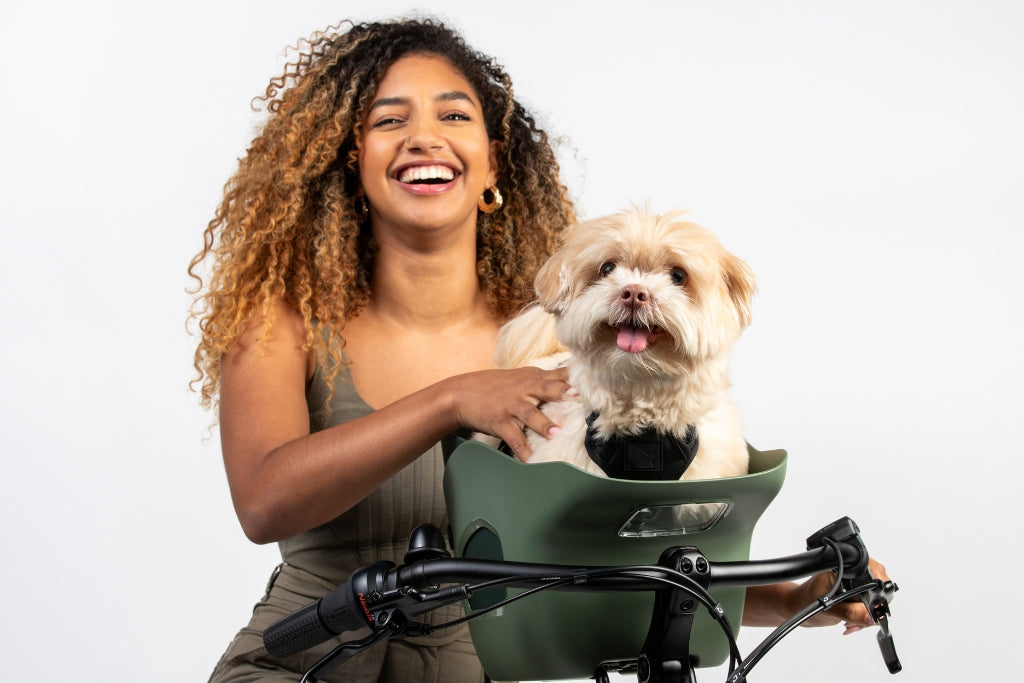How to Prevent Your Dog from Jumping Out of a Bike Basket
If you’ve ever taken your pup for a bike ride and suddenly felt them shifting, standing up, or—worst of all—trying to make a grand escape, you’re not alone. Dogs jump out of bike baskets for a variety of reasons, and understanding why is the first step in preventing it. Some dogs are just too curious for their own good! The world is full of exciting sights, smells, and sounds, and they may not realize that leaping out mid-ride isn’t exactly a great idea. Others might feel uneasy—biking is a new experience, and the movement, speed, and unfamiliar surroundings can make them anxious. If your dog is naturally skittish or prone to excitement, they'll need extra reassurance before they can fully relax in their basket.
Then, there’s the issue of comfort. A poorly sized or unstable bike basket can make a dog feel insecure, leading to fidgeting or even attempts to escape. If the basket wobbles too much, lacks enough space, or doesn’t offer a secure tether, it can contribute to their unease. Temperature can also play a role—if it's too hot or if they don’t have enough airflow, they might try to jump out in search of relief. Recognizing these potential triggers will help you create a safer and more enjoyable biking experience for both you and your pup!

Choosing the Right Bike Basket for Your Dog’s Safety
Not all front-mounted dog bike basket models are designed equally, and choosing the right one can make all the difference in keeping your dog secure. A well-fitted basket should provide enough room for your dog to sit or lie down comfortably but not so much that they slide around during turns. The material also matters—sturdy construction prevents tipping, while proper ventilation ensures they stay cool and comfortable. A front-mounted dog bike basket often allows better control since you can keep an eye on your pup while riding, making it a great choice for nervous riders or dogs that need extra reassurance.
When picking a basket, prioritize these features:
✔️ Safety harness attachment – A built-in tether keeps your dog securely fastened, reducing the risk of jumping out.
✔️ Reinforced frame and stable mounting – Prevents excessive movement that can cause instability.
✔️ Comfort padding – Ensures a smooth ride and reduces discomfort on longer trips.
✔️ Weather-resistant design – Breathable for summer rides but cozy enough for cooler days.
✔️ Weight capacity suited for your dog’s size – A snug but safe fit is key to preventing accidents.
Investing in a high-quality basket means fewer worries and more enjoyable rides. The right setup ensures that your dog stays safe while you both get to enjoy the great outdoors together!
Introducing Your Dog to the Bike Basket
A lot of dogs won’t immediately love the idea of sitting in a basket on a moving bike—especially if they’re not used to it. The key is to introduce them to it gradually so they build positive associations with their new ride. Start by letting your dog explore the basket while it's stationary. Place it indoors or in a quiet space, and encourage them to sniff it out. Toss in their favorite blanket or a couple of treats so it feels familiar and safe. Let them sit in it without pressure—if they climb in on their own, reward them with plenty of praise!
Once they seem comfortable, try short practice sessions where you lift the basket slightly or gently rock it. Then, move on to placing the basket on your bike while keeping it still. After a few successful stationary sessions, take them for a very slow ride—just a few feet at first. If they remain calm, extend the distance gradually. The goal is to ensure they feel secure before attempting a longer journey. Dogs thrive on routine, so be patient and let them set the pace. With time, they’ll start to associate the basket with adventure rather than uncertainty.
Using Safety Harnesses and Secure Attachments
A built-in safety harness is non-negotiable when it comes to preventing jumps. Even the best-behaved dogs can get spooked by a sudden noise or movement, so having a secure tether ensures they stay put. Unlike collars, which can put unnecessary strain on your dog’s neck, a harness distributes pressure evenly and prevents choking if they try to move around too much. A short yet flexible leash attachment is ideal—it should allow a little movement for comfort but not enough for your pup to climb over the basket’s edge.
Here’s what to look for in a secure setup:
✅ Adjustable harness – Ensures a snug fit without restricting movement.
✅ Short but sturdy tether – Prevents excessive shifting while allowing some comfort.
✅ Quick-release buckle – In case you need to detach your dog quickly.
✅ Basket with built-in leash clip – A must-have for added safety.
Before every ride, double-check the harness and attachment points. A loose strap or a poorly fastened leash can make all the difference between a fun ride and a risky escape attempt. With the right gear, you’ll have peace of mind knowing your dog is safe and secure on every trip.
Training Techniques to Keep Your Dog Calm During Rides
Training your dog to stay relaxed in their basket is crucial for safe and enjoyable rides. If your dog is anxious or restless, they’re more likely to fidget, whine, or even attempt to jump. Start by reinforcing calm behavior while they’re in the basket. Reward them when they sit still and stay relaxed—treats, verbal praise, and even gentle petting can reinforce the right mindset.
Consider teaching commands like:
👉 “Sit” and “Stay” – Essential for keeping them in place during the ride.
👉 “Settle” – Helps them associate basket time with calmness.
👉 “No jump” – A clear command for stopping escape attempts.
Practice these commands while stationary before moving onto short, controlled rides. Avoid long trips until your dog consistently stays calm in the basket. If they show signs of nervousness—like trembling, panting, or excessive movement—pause and reassure them before continuing. Positive reinforcement is your best friend here! Dogs respond best when they feel secure and rewarded for good behavior.
Creating a Comfortable and Safe Environment
A comfortable dog is a calm dog, and making sure their dog bike basket is a cozy and secure space can go a long way in preventing jumping. If the basket feels too hard or unsteady, they may squirm or try to escape. A well-padded bottom, whether it’s a soft blanket or a cushioned liner, can make a huge difference. Not only does it provide comfort, but it also helps absorb shocks from bumps in the road.
Other key factors to consider:
✔️ Proper ventilation – Ensure good airflow to keep them cool and comfortable.
✔️ Shade and weather protection – Too much sun or wind can make a ride uncomfortable.
✔️ Noise reduction – Avoid overly loud areas until your dog is fully adjusted.
Additionally, avoid sudden stops or sharp turns that could jolt them. If the ride is smooth and predictable, they’ll be much more likely to stay calm and enjoy the experience. Creating a positive, stress-free environment will help your pup associate bike rides with fun instead of fear!
Choosing the Right Route and Ride Conditions
Now that your dog is comfortable in their dog bike basket, the next step is picking the right route. Not all bike paths are dog-friendly, and the terrain you choose can make or break the experience. Start with quiet, smooth roads or bike trails with minimal traffic. Avoid rough, uneven surfaces that could make the ride bumpy or uncomfortable. Steady, predictable terrain helps your dog feel secure, reducing the chance of them trying to jump out due to sudden jolts.
Pay attention to weather conditions as well. Dogs can overheat quickly, especially in direct sunlight. If it’s a warm day, aim for shaded paths or schedule your rides during cooler hours—early mornings or late afternoons are ideal. If the weather is too cold or windy, consider a basket with a protective cover to shield them from the elements. Keep an eye on their body language—if they seem too hot, restless, or uncomfortable, it’s time to take a break or call it a day. Their comfort always comes first!
Recognizing Signs of Discomfort or Anxiety
Even if you've done everything right, your dog may still feel uneasy in the basket at times. It's crucial to recognize the early signs of discomfort before they escalate into an escape attempt. Some dogs communicate their stress through subtle cues, while others are more obvious about it.
Watch for these common signs of discomfort:
❌ Excessive shifting or fidgeting – Indicates they’re unsure or trying to find a better position.
❌ Whining or barking – A clear signal of distress, excitement, or discomfort.
❌ Panting excessively (when it’s not hot) – Can be a sign of anxiety or overstimulation.
❌ Trying to climb out or scratching at the basket – A strong indication they don’t feel secure.
If your dog exhibits any of these behaviors, don’t ignore them. Stop the ride, offer reassurance, and adjust their seating or safety harness if needed. Some dogs take longer to fully adjust, and that’s okay! The more you cater to their comfort and needs, the more likely they’ll learn to love bike rides.
The Importance of a High-Quality Dog Bike Carrier
Here’s where the right bike basket makes all the difference. A secure, well-designed carrier ensures your dog feels stable and safe while riding, reducing the chances of them attempting to jump out. Many standard baskets simply aren’t built with dog safety in mind, which is why it’s important to choose one designed specifically for your furry co-pilot.

The Kvisp Dog Bike Carrier is a great example of a basket that prioritizes security, comfort, and usability. What makes it stand out?
✅ Built-in safety tether – Keeps your pup securely attached without restricting movement.
✅ Stable and reinforced structure – Prevents wobbling, which can make dogs uneasy.
✅ Comfortable, padded interior – Ensures a cozy ride, even on longer trips.
✅ Easy-to-install mounting system – Stays secure on the bike, even at higher speeds.
A high-quality bike basket isn’t just about keeping your dog from jumping out—it’s about creating a safer, more enjoyable experience for both of you. Investing in a well-designed carrier means fewer worries and more fun on the road!
If you’re thinking about getting one, check out the Kvisp Dog Bike Carrier reviews to see what other pet parents are saying about their experiences.)

Gradually Increasing Ride Complexity
Once your dog has adjusted to smooth, slow rides, you can gradually introduce them to more dynamic biking experiences. The goal is to build their confidence over time, rather than overwhelming them with too much too soon.
Here’s how to ease into more complex rides:
-
Increase ride duration – If they’re comfortable with short rides, try extending the distance gradually.
-
Introduce new routes – Start with familiar paths, then slowly incorporate busier streets or different terrains.
-
Practice stopping and starting – Help them get used to minor jolts and movements.
-
Expose them to moderate distractions – Such as light traffic, passing cyclists, or mild noises.
The key is to observe how your dog reacts. If they remain calm, you’re on the right track! If they seem anxious, take a step back and return to easier rides until they’re ready for more. Let them set the pace—forcing progress too quickly can undo all the trust and training you’ve built so far.
Alternative Solutions for Dogs That Struggle with Bike Rides
Some dogs just don’t take to bike baskets, no matter how much training and reassurance you provide—and that’s okay! Every pup is different, and there are plenty of other ways to include them in your cycling adventures without a front-mounted basket.
Consider these alternatives:
-
Bike trailers – Ideal for larger dogs or those who need extra space to feel secure.
-
Backpack-style carriers – A great option for small dogs who prefer close contact with their human.
-
Running alongside your bike – If your dog has the energy, a running leash attachment may be the perfect solution.
-
Slowly introducing biking in stages – Some dogs need more time and patience before they feel safe in a basket.
If your pup isn’t feeling it, don’t force it. The goal is to make biking an enjoyable experience, not a stressful one. Finding an alternative that suits their comfort level ensures that both of you can still enjoy outdoor adventures together.
Making Every Ride a Positive Experience
At the end of the day, cycling with your dog is about more than just getting from point A to point B—it’s about creating lasting memories and strengthening your bond. A safe, secure, and comfortable bike basket makes all the difference in ensuring that both you and your pup enjoy the ride.
As you continue your biking adventures, keep these final tips in mind:
-
Consistency is key – Regular rides help reinforce positive behavior.
-
Prioritize comfort – A cozy basket encourages relaxation.
-
Stay flexible – Not all dogs adapt at the same speed, and that’s okay.
-
Most importantly, have fun! – If your dog is enjoying themselves, you’ll feel the joy too.
With patience, the right setup, and a little training, you’ll soon have a confident co-rider who loves their bike basket as much as you love having them along for the journey. Ready to hit the road? Your next adventure awaits!




